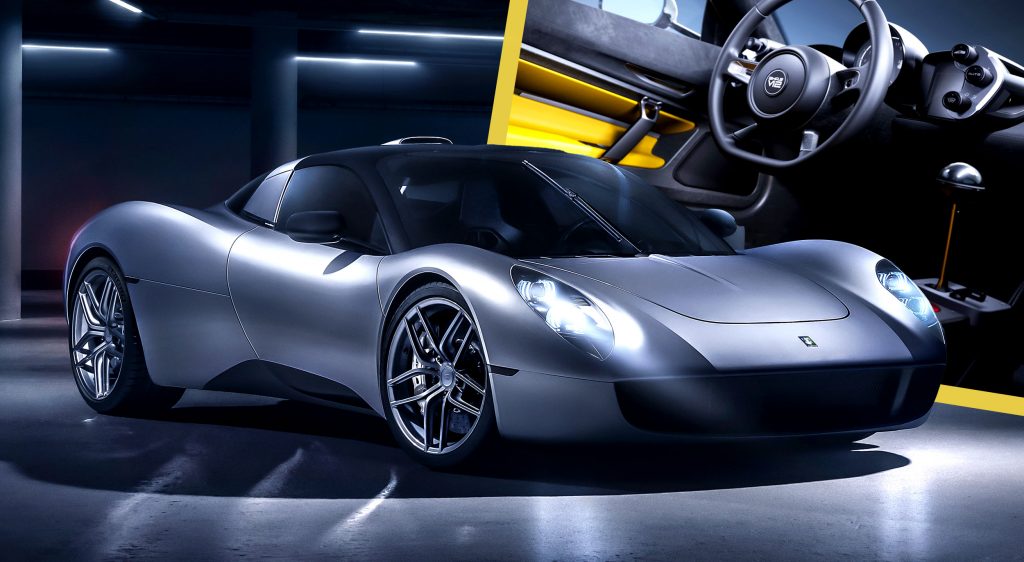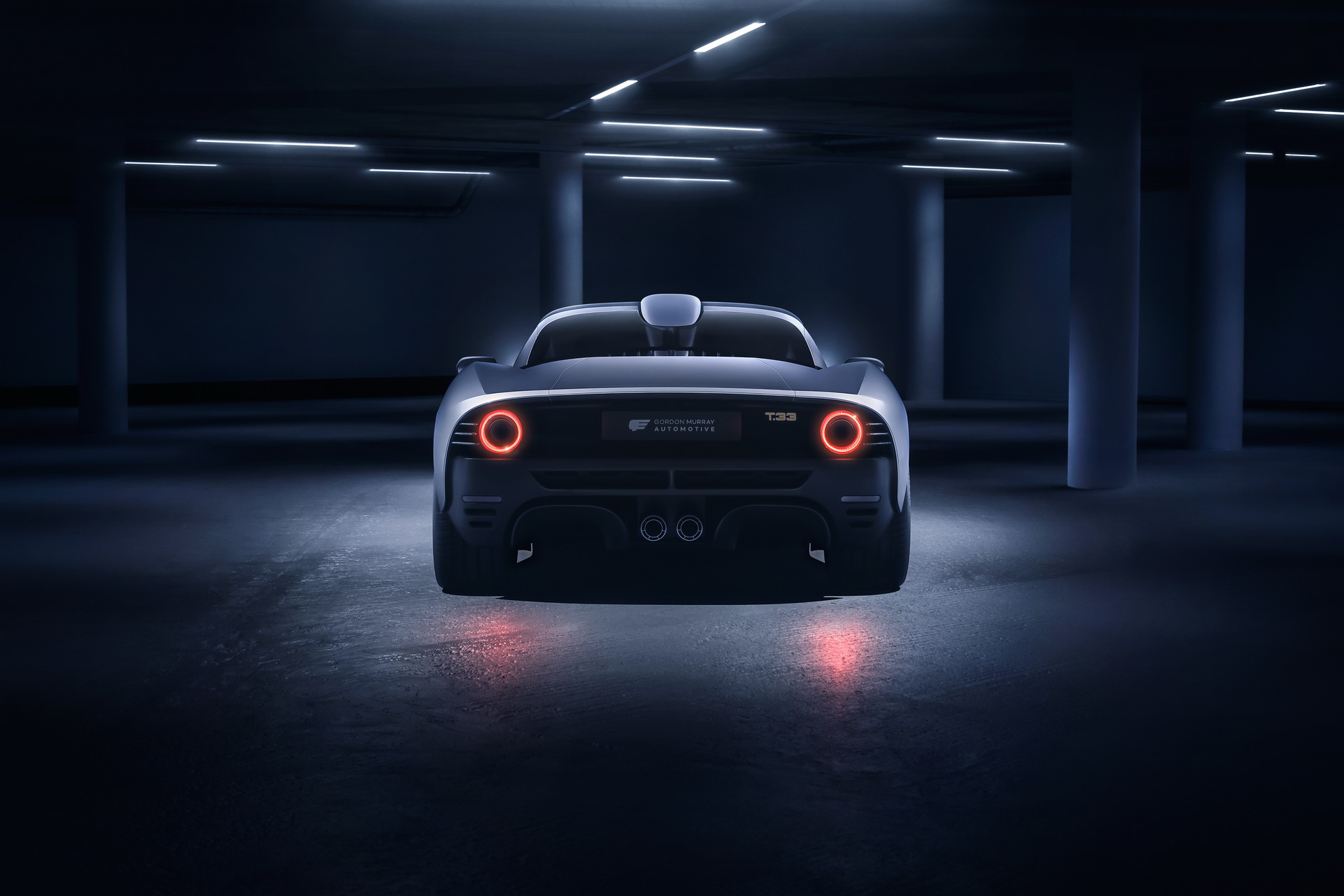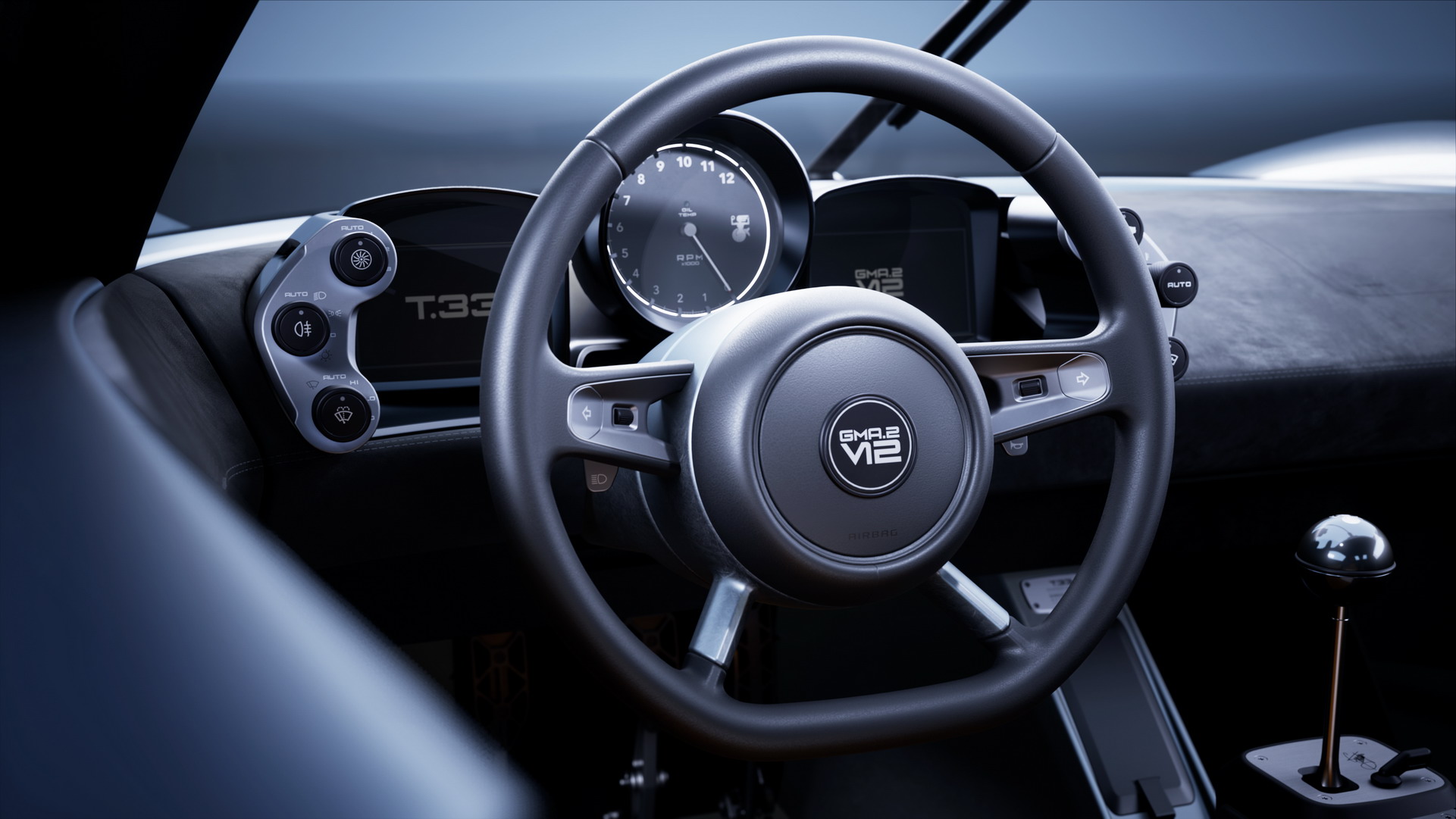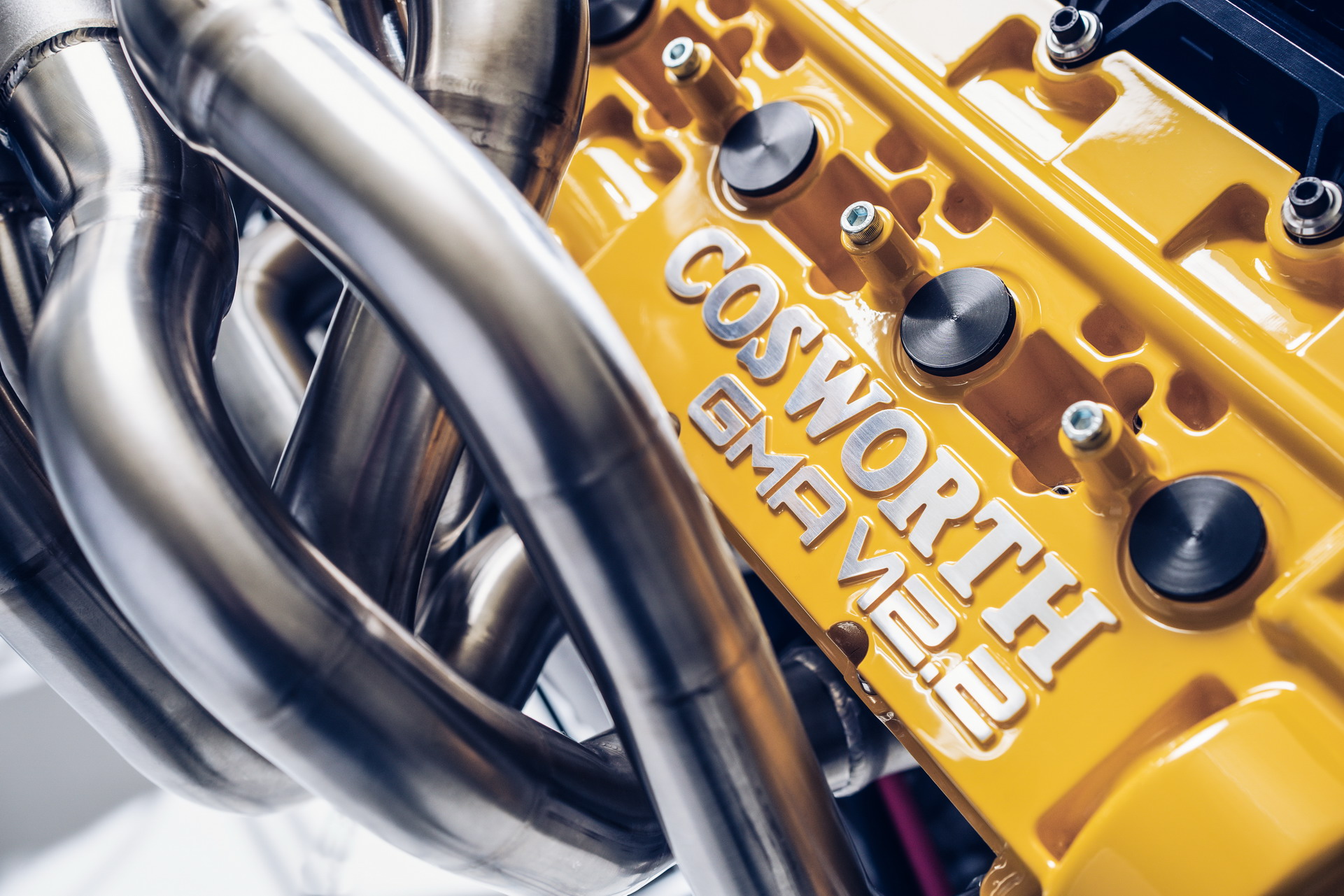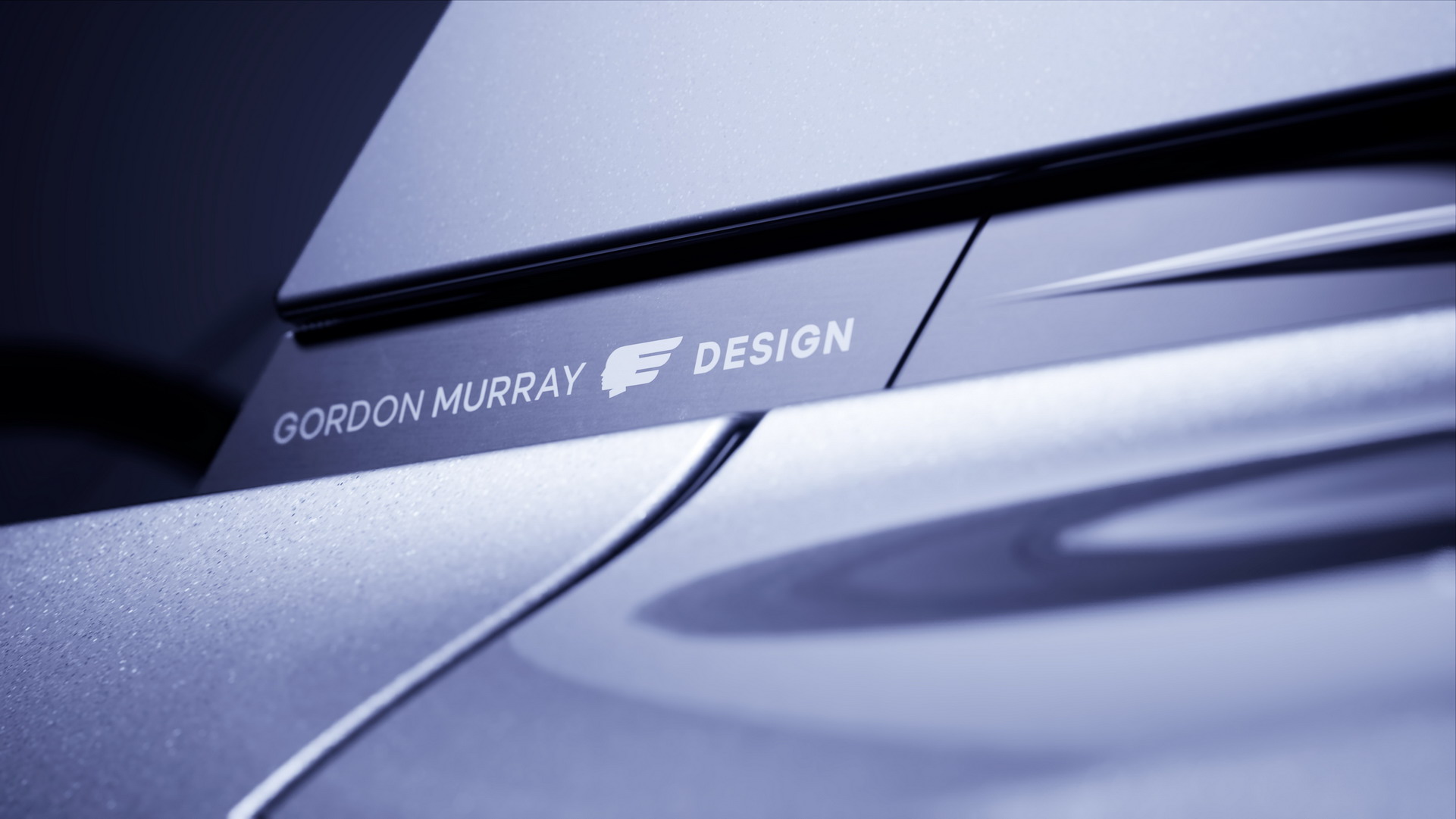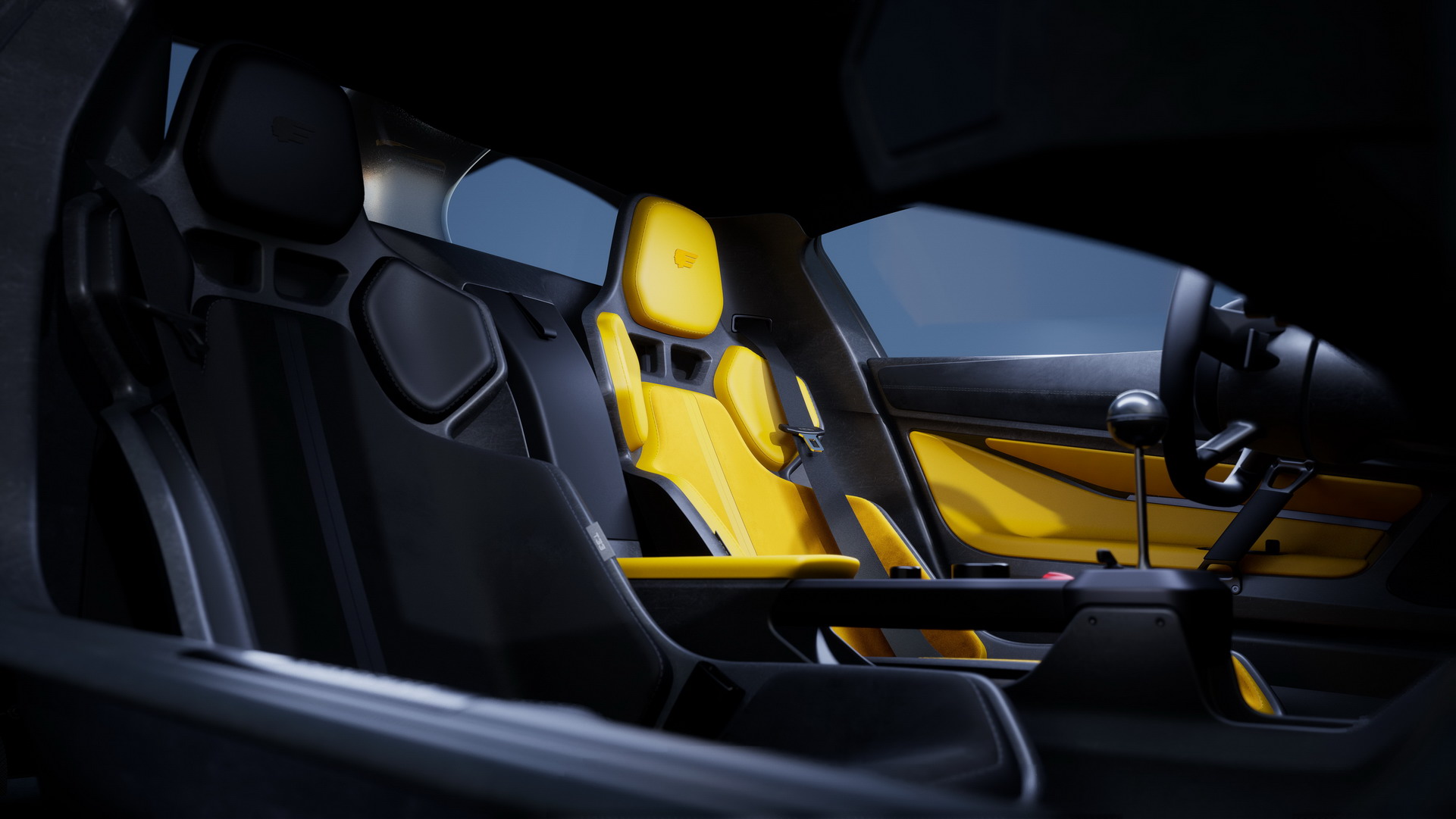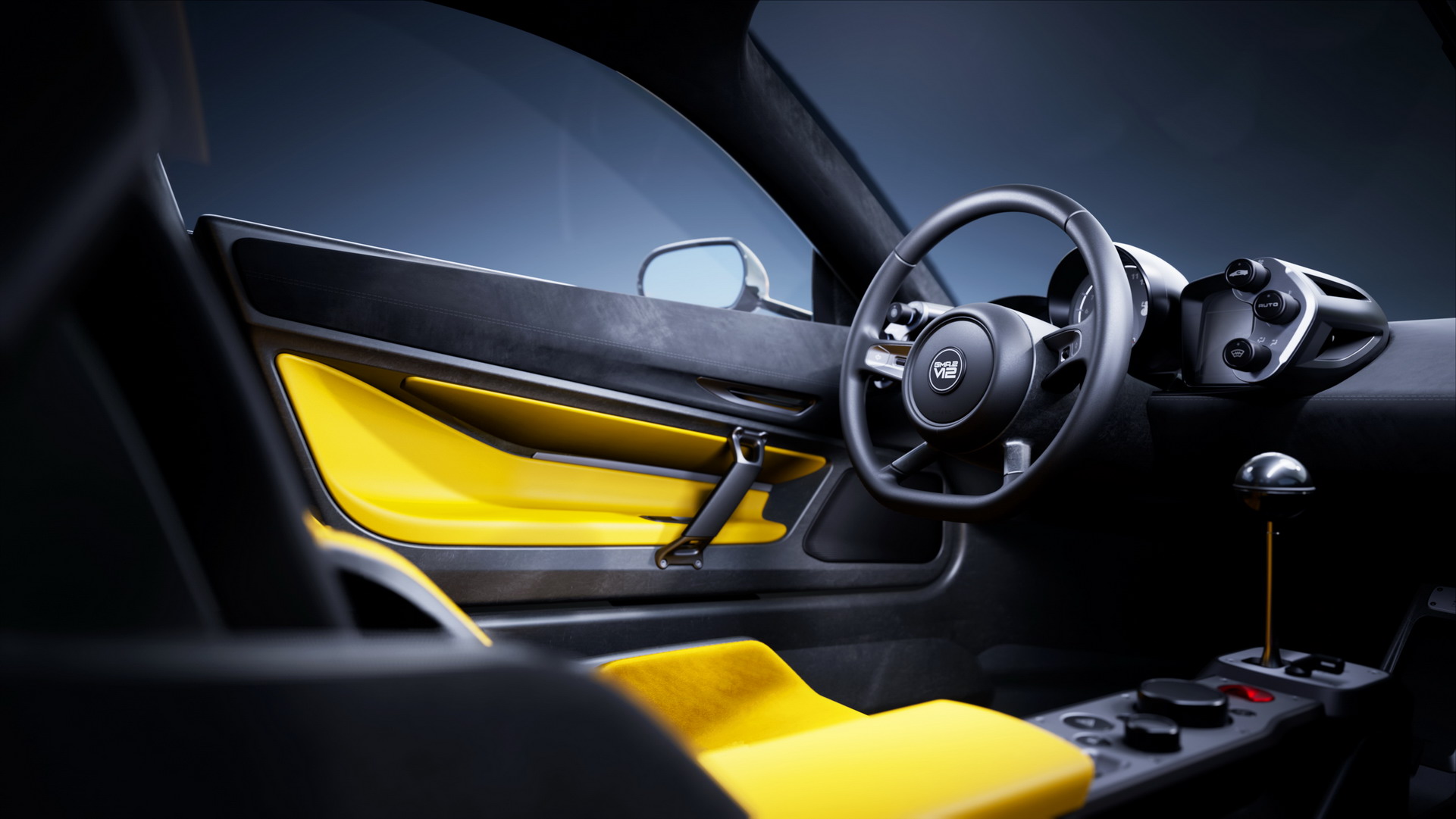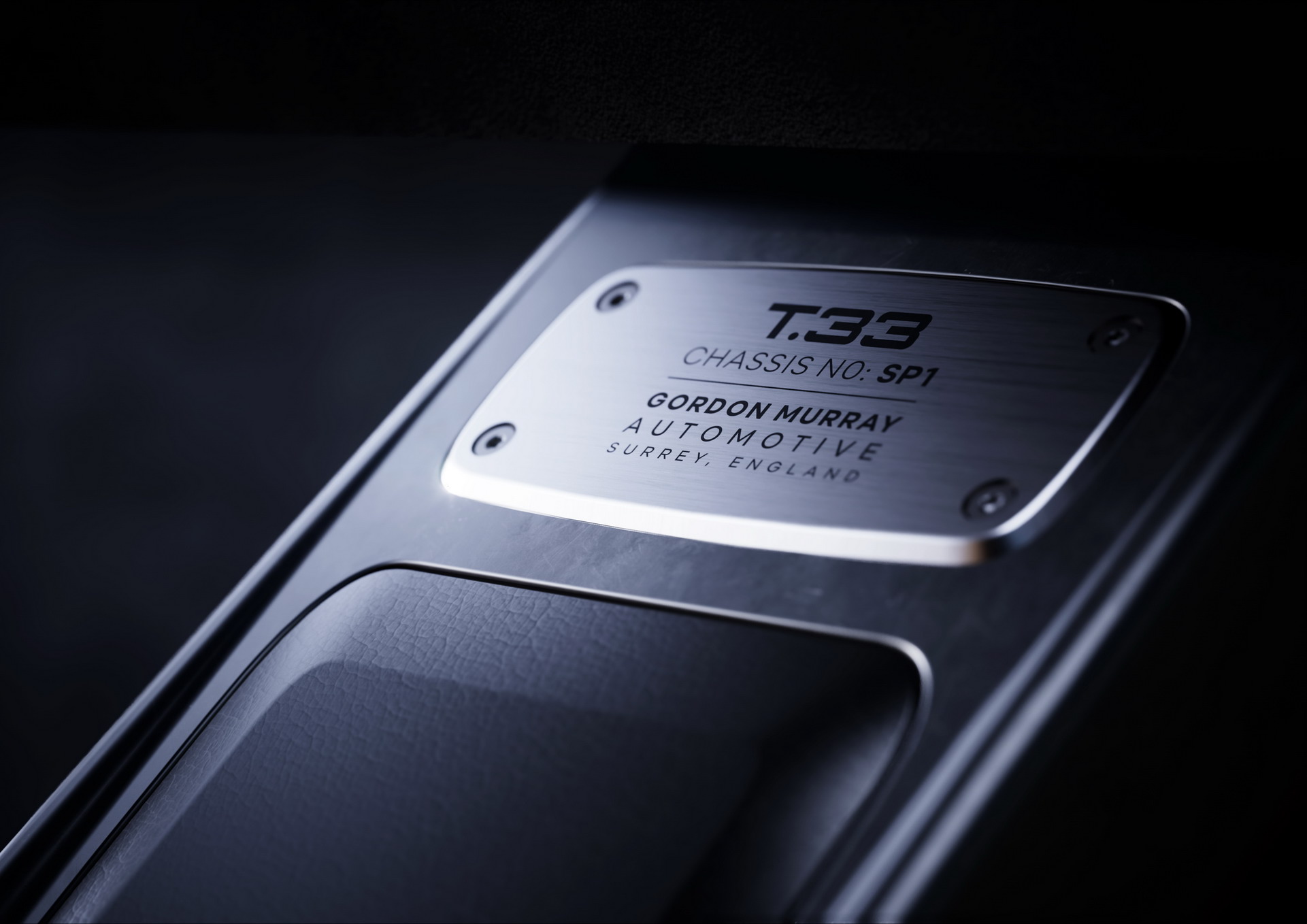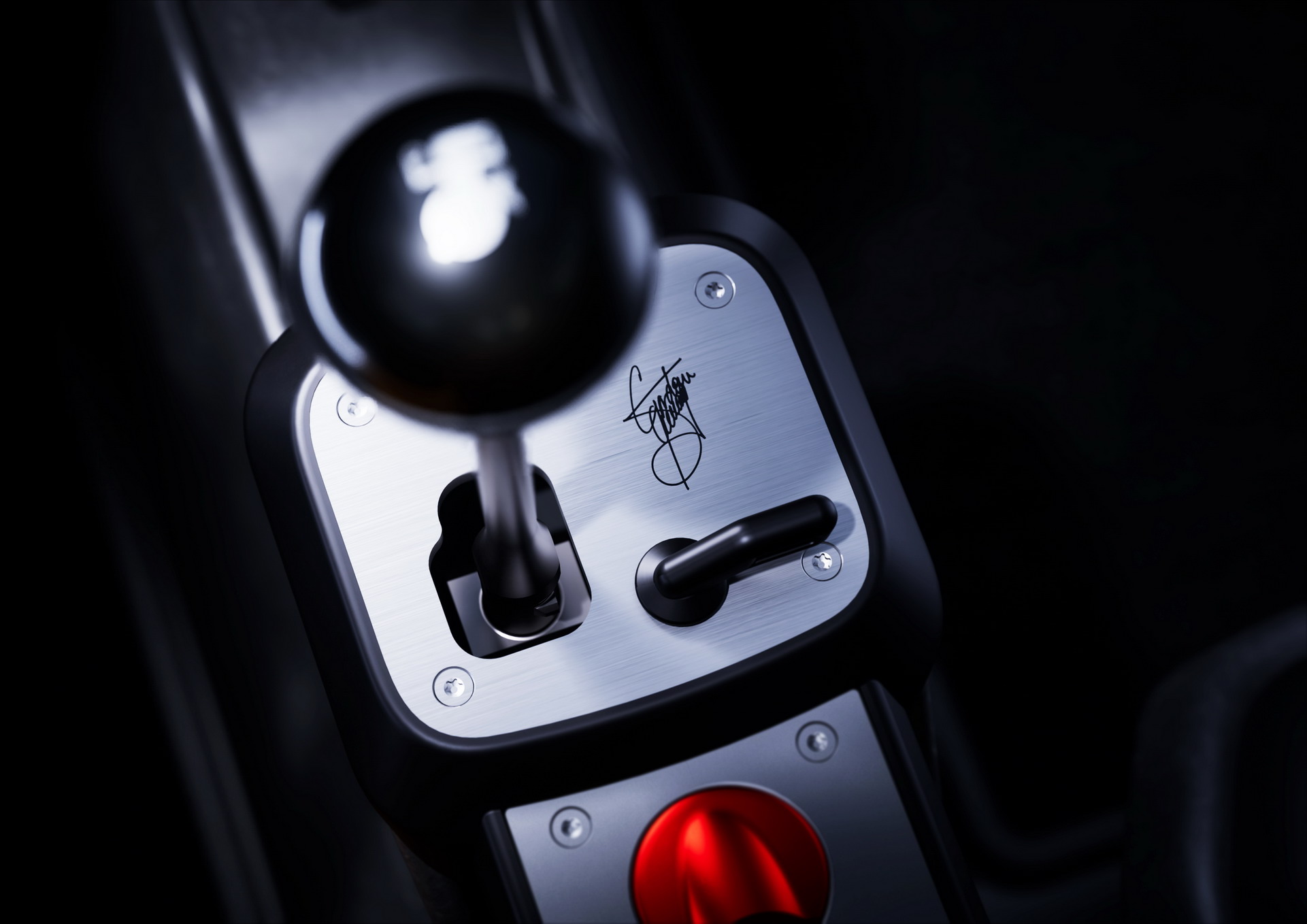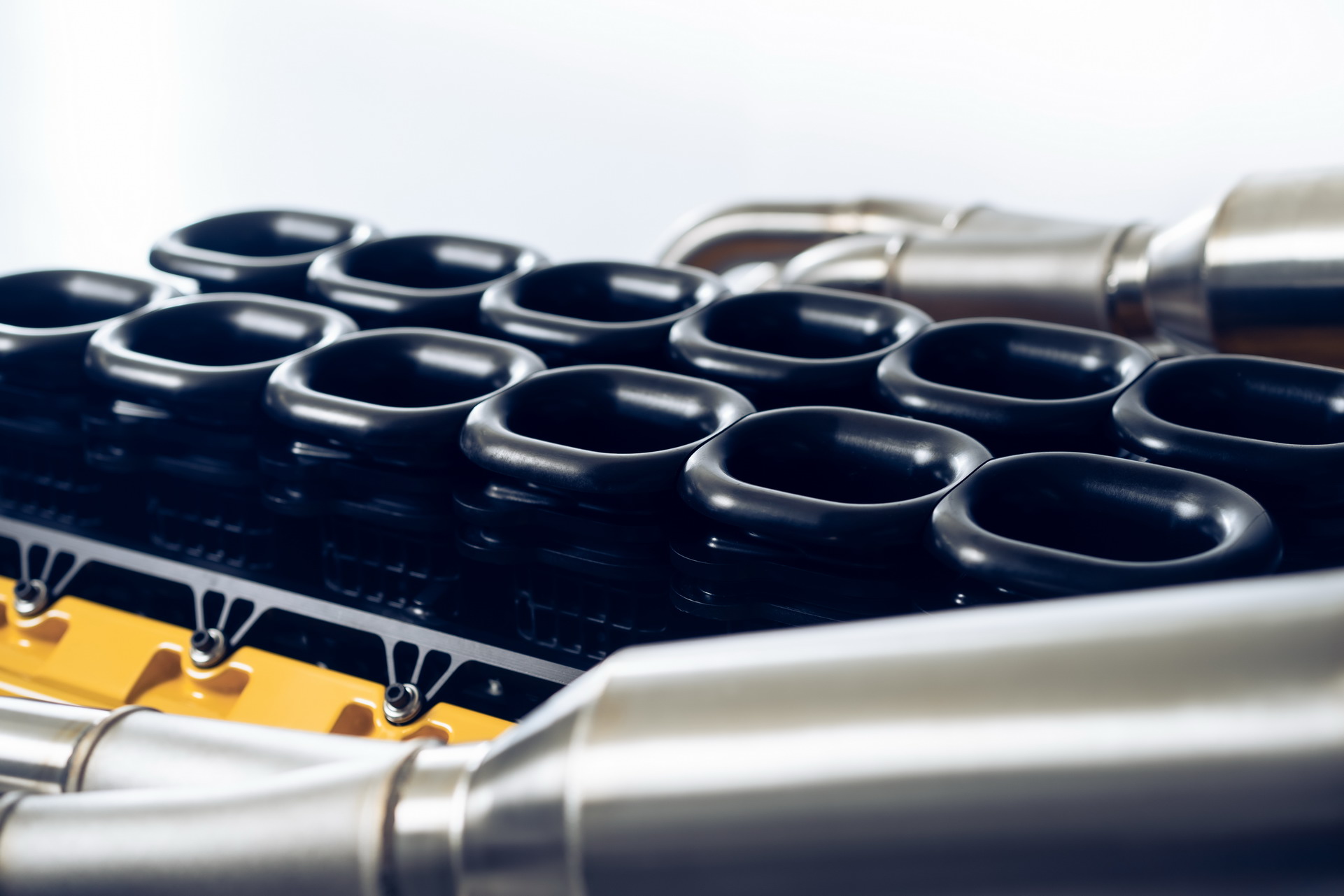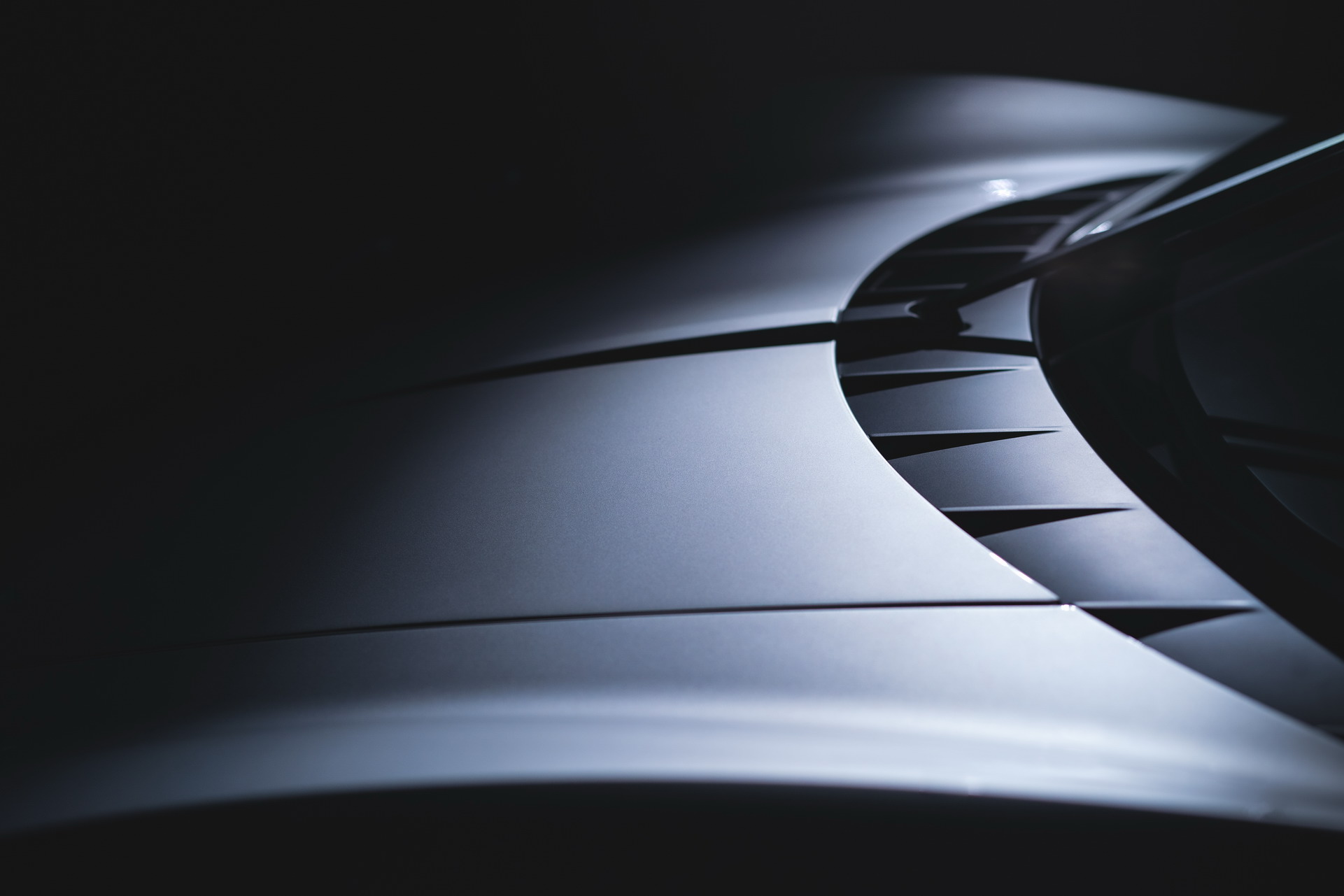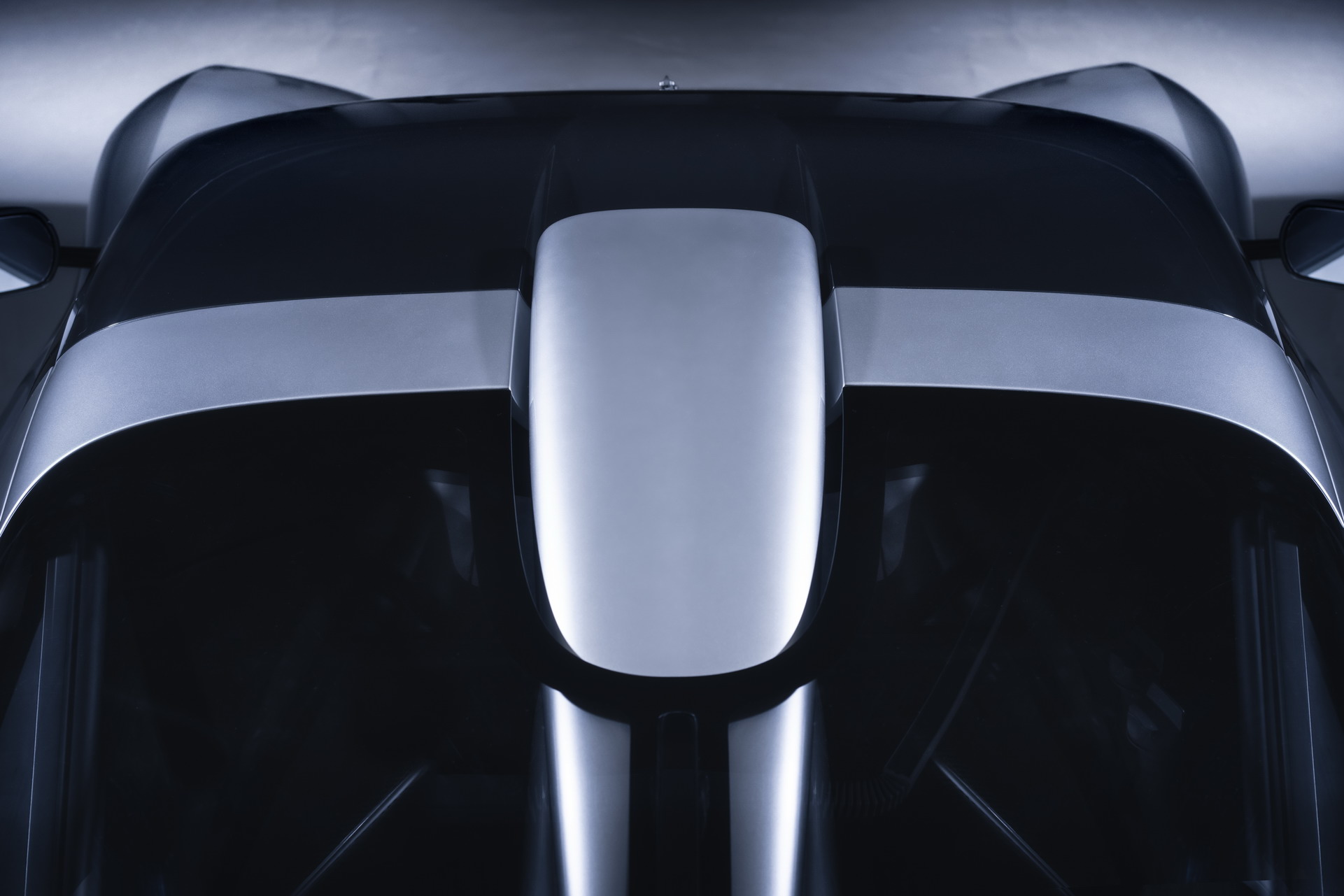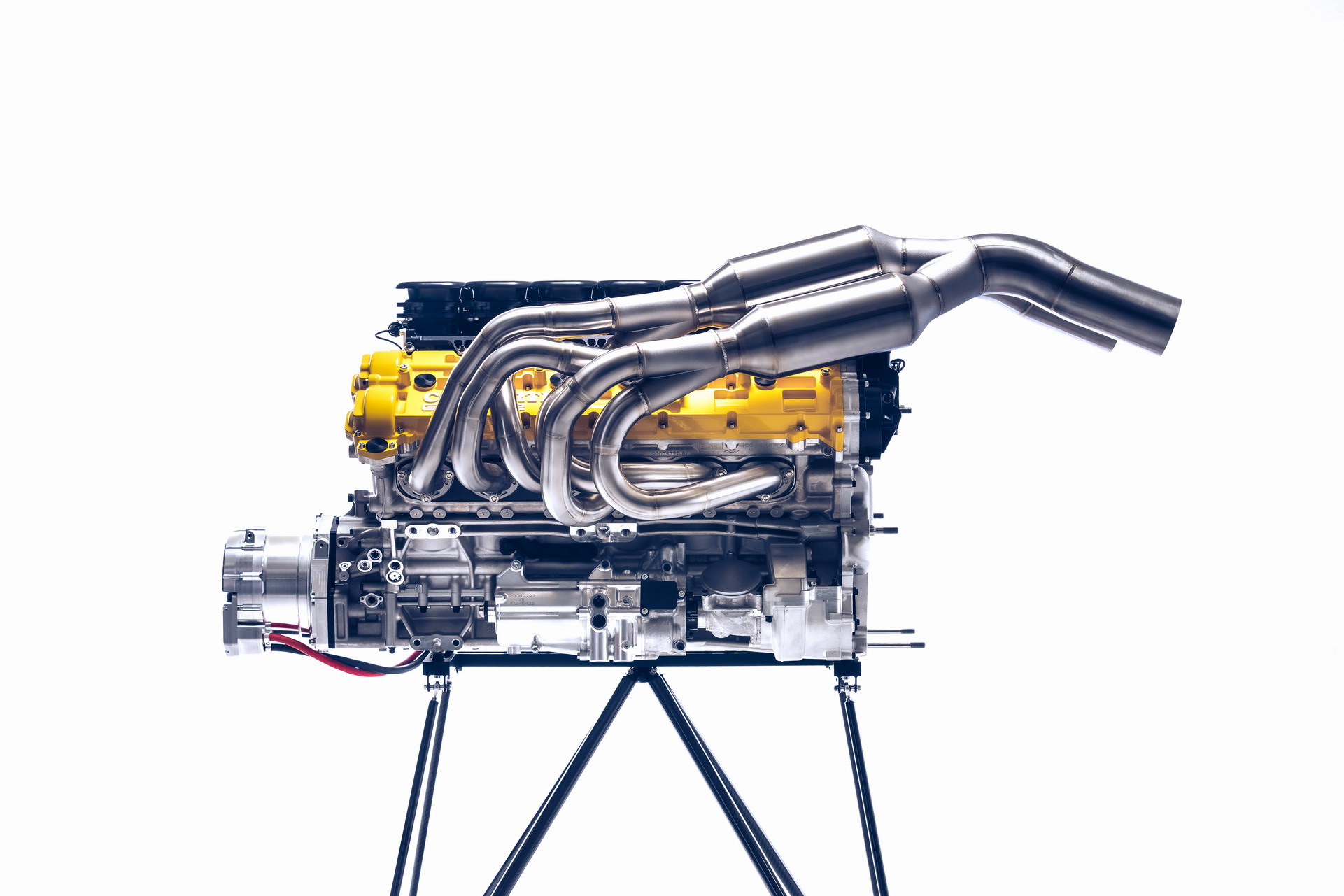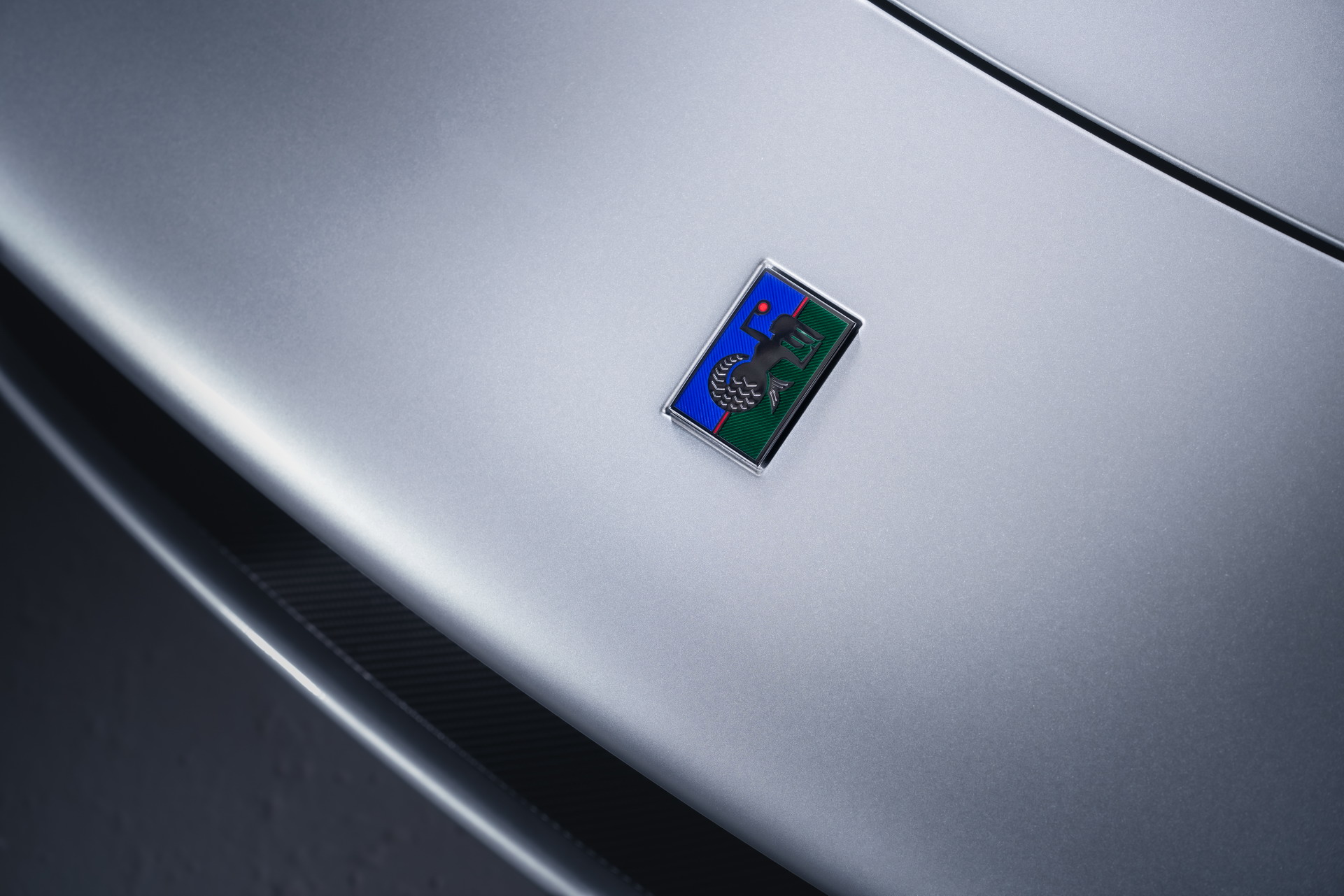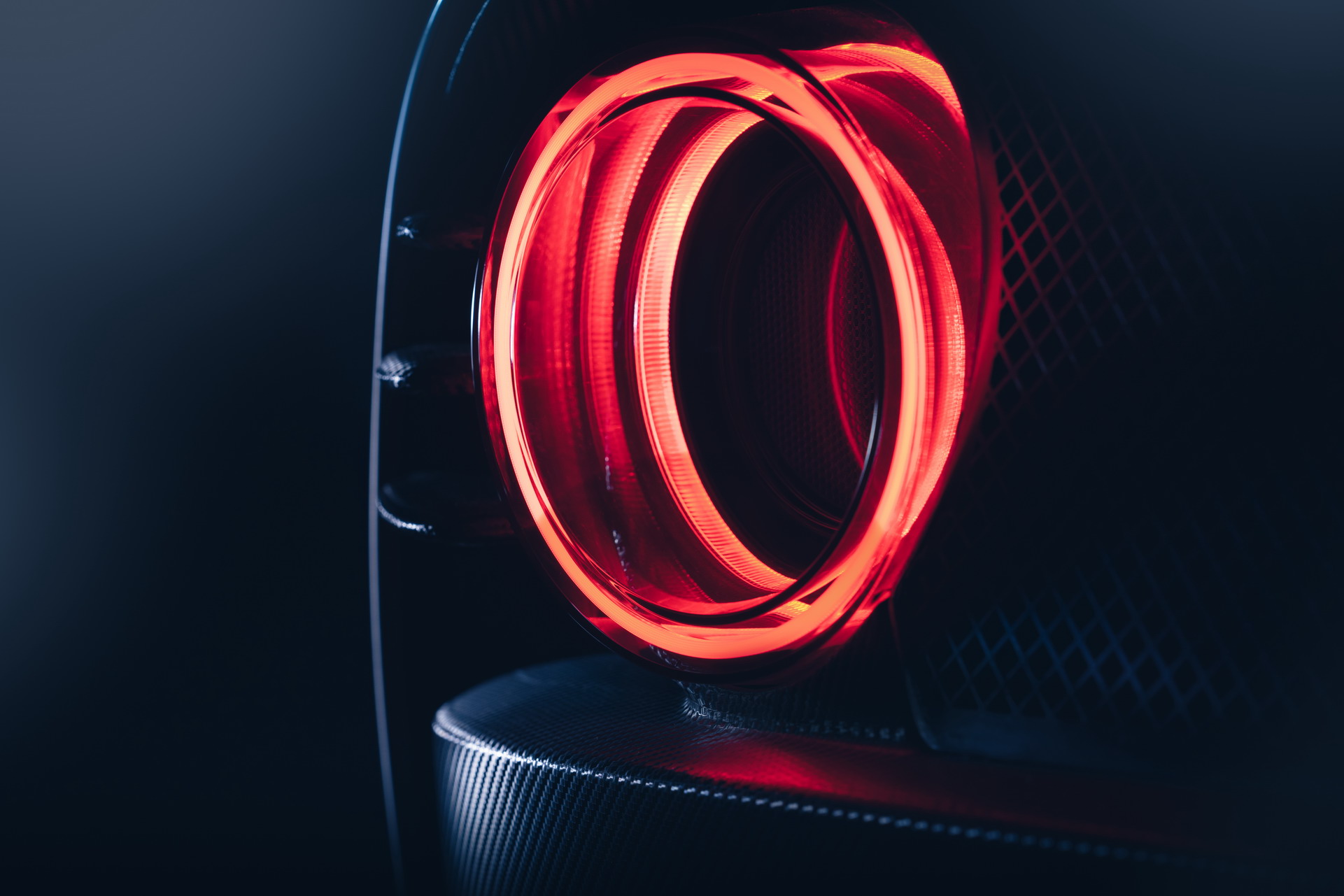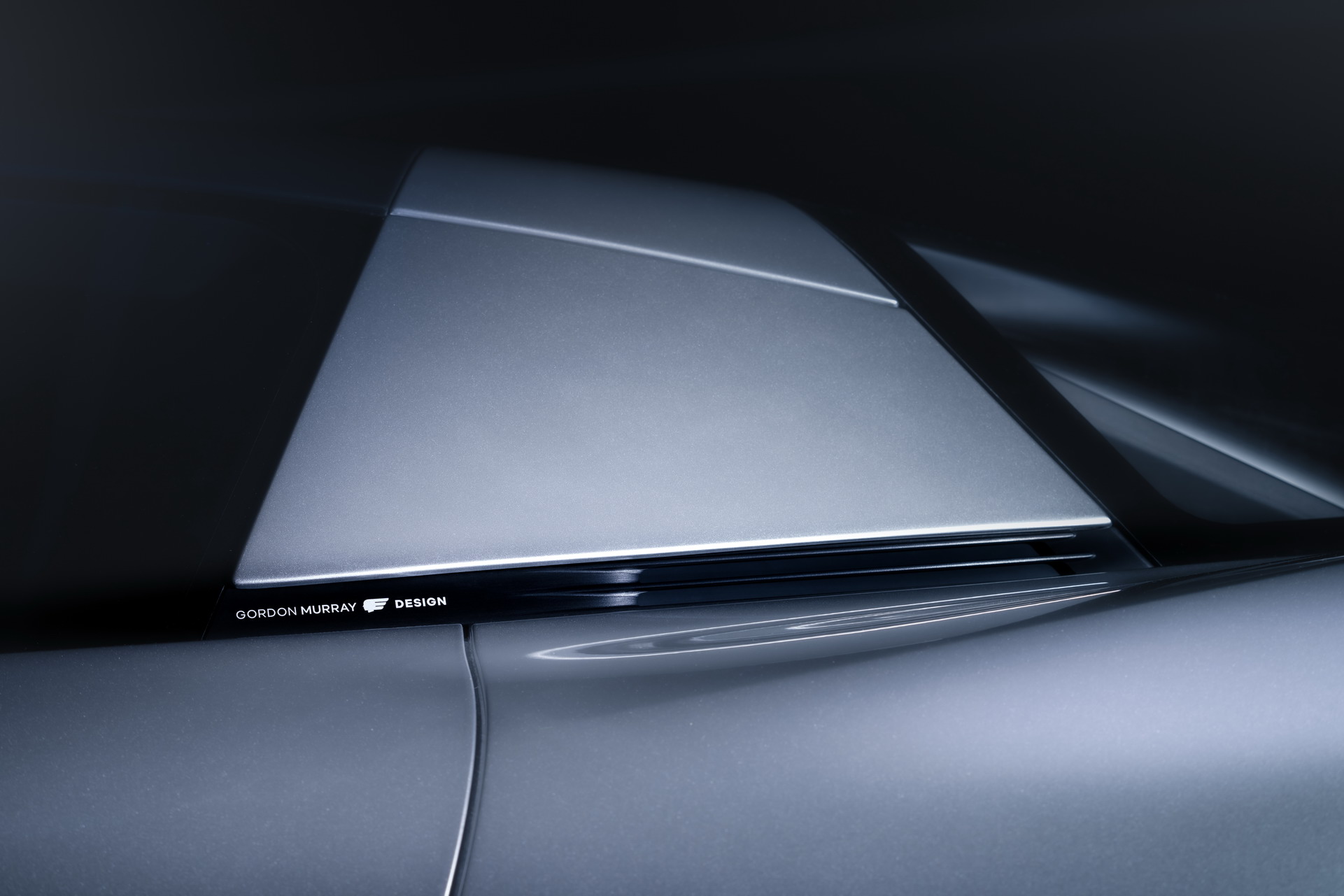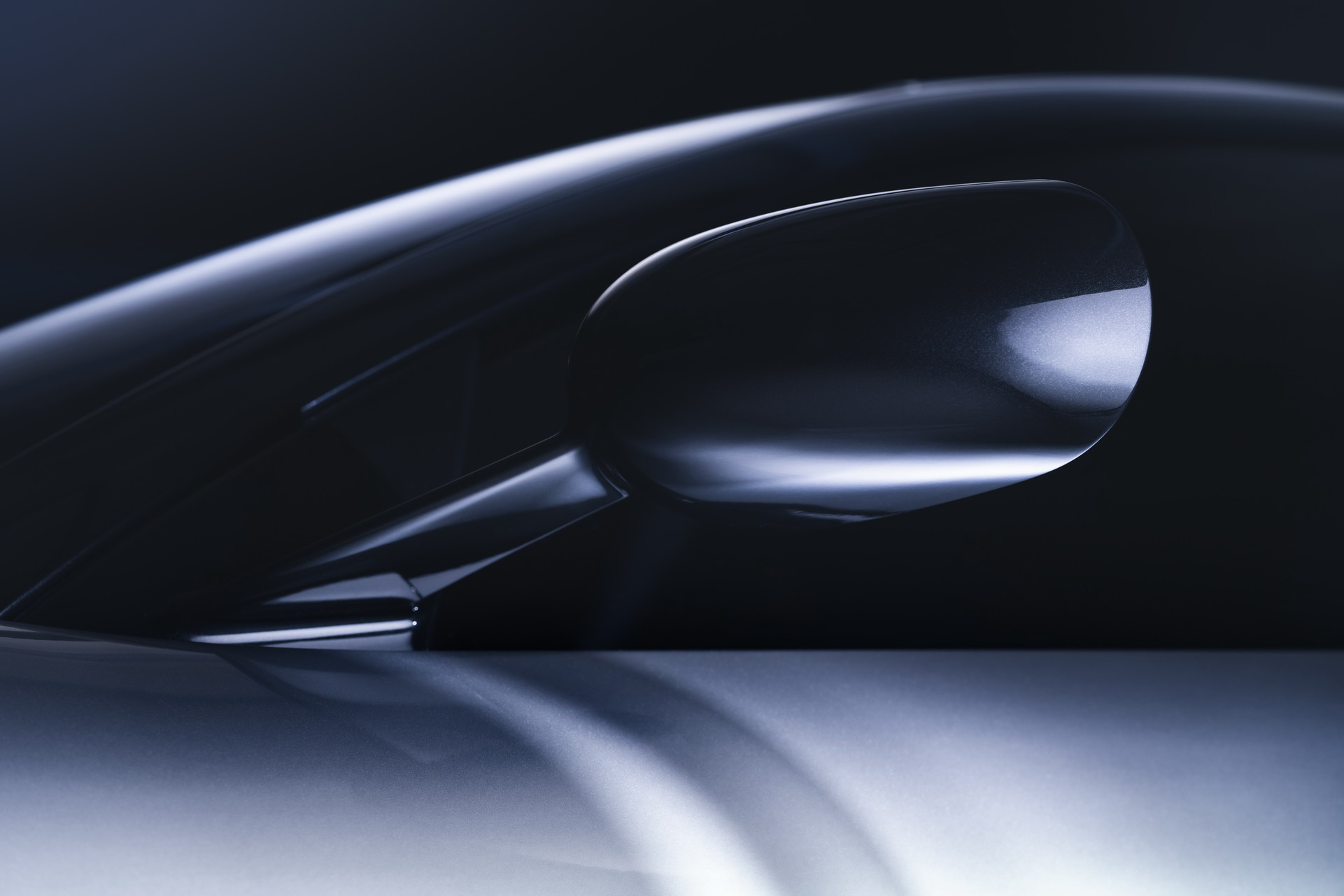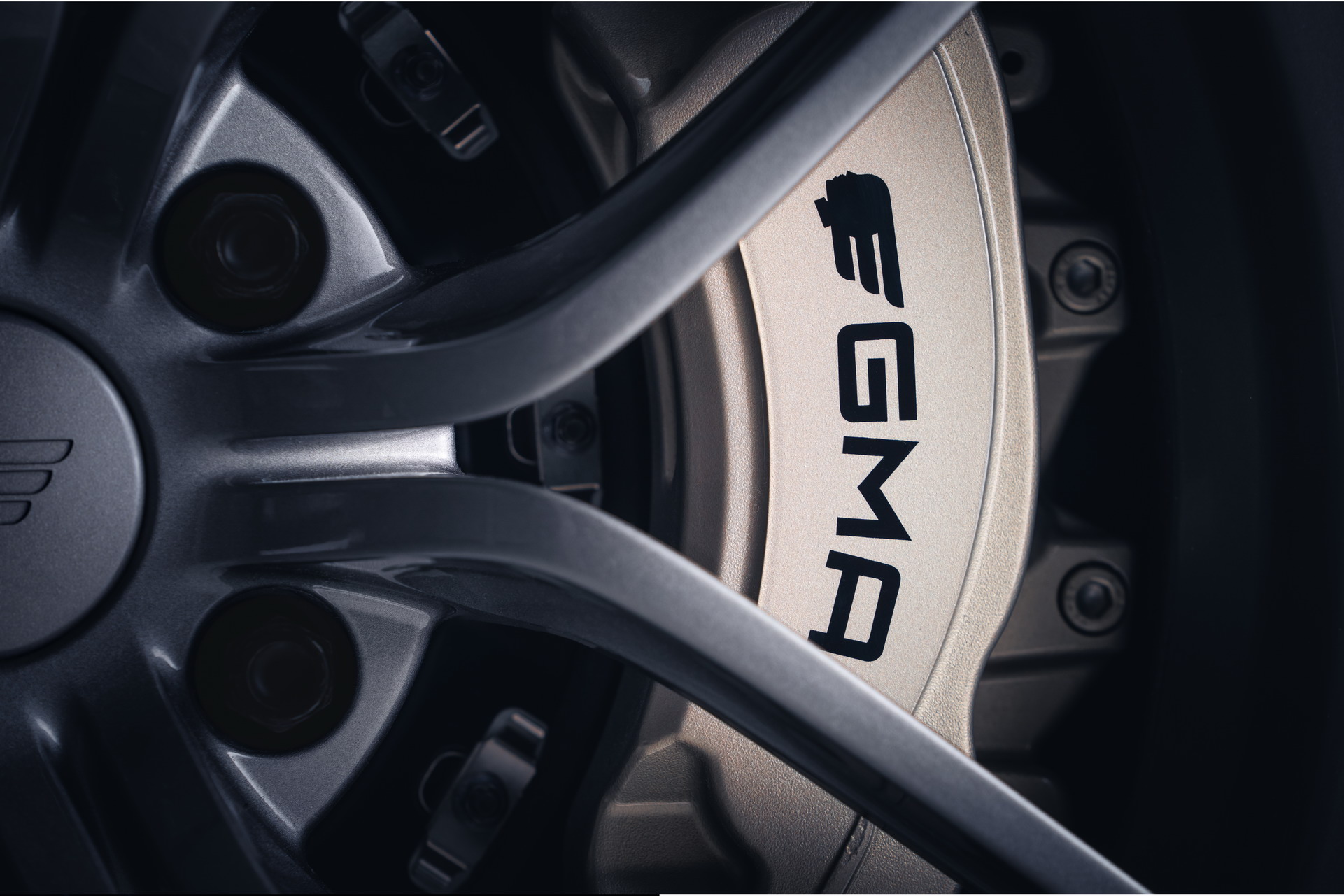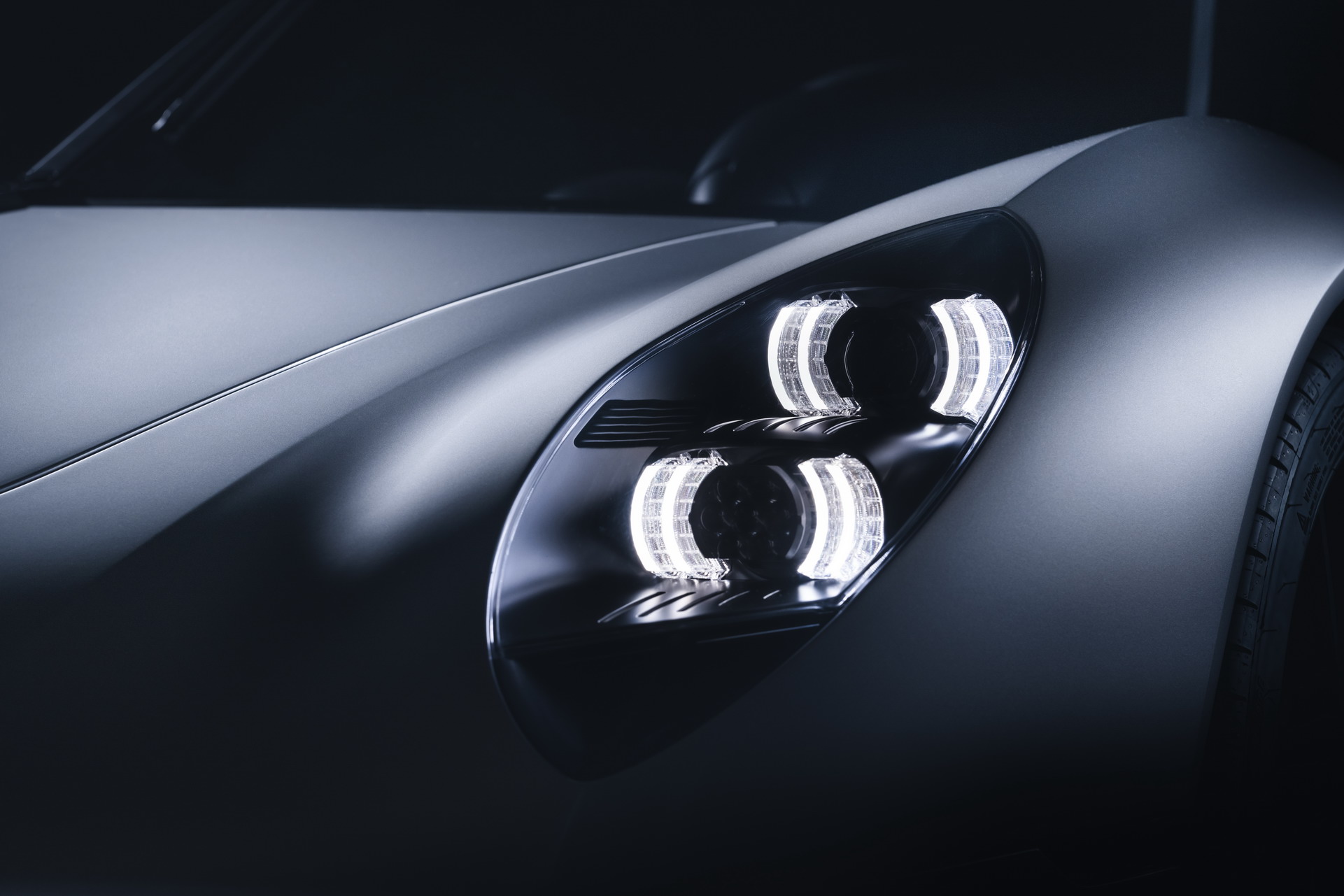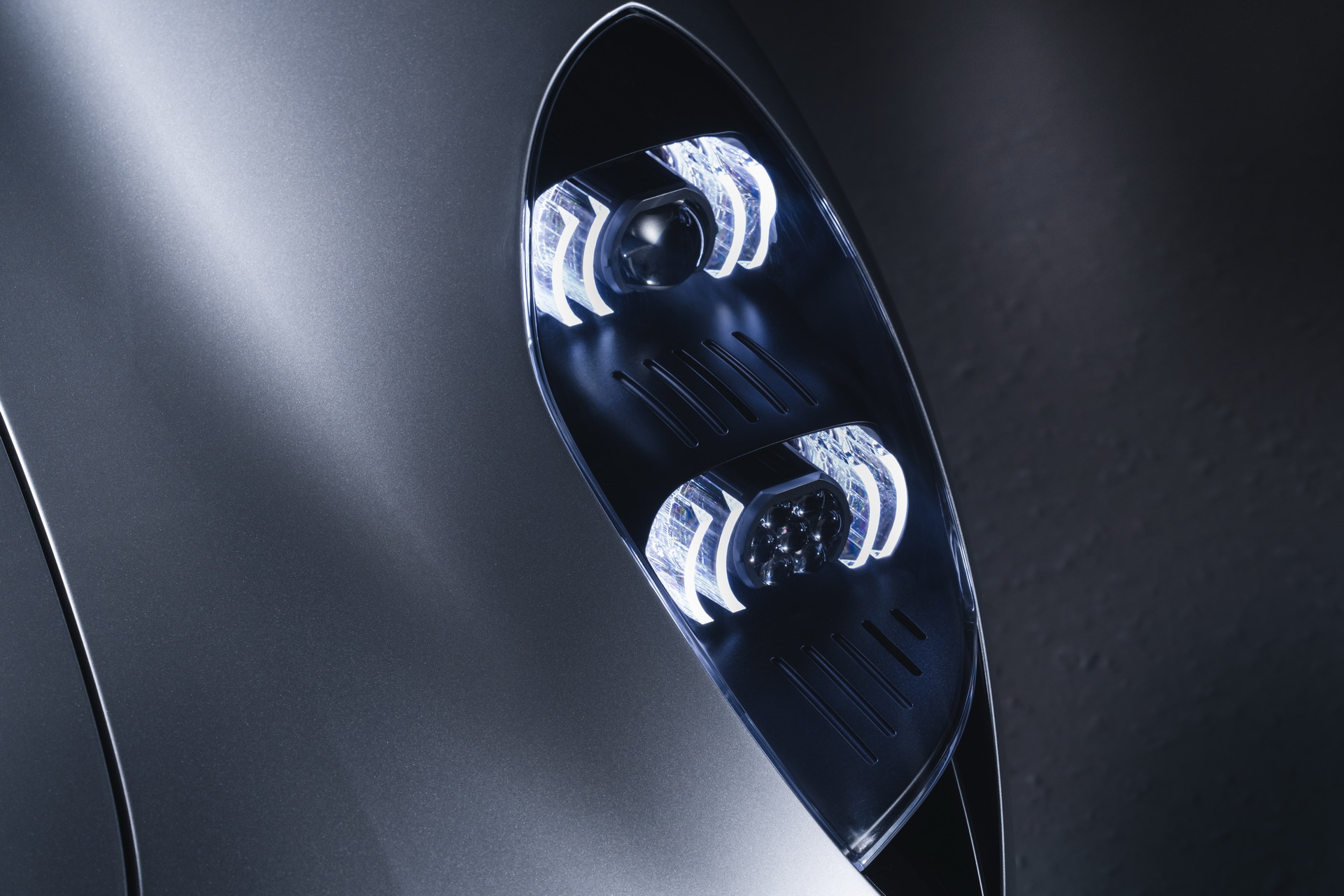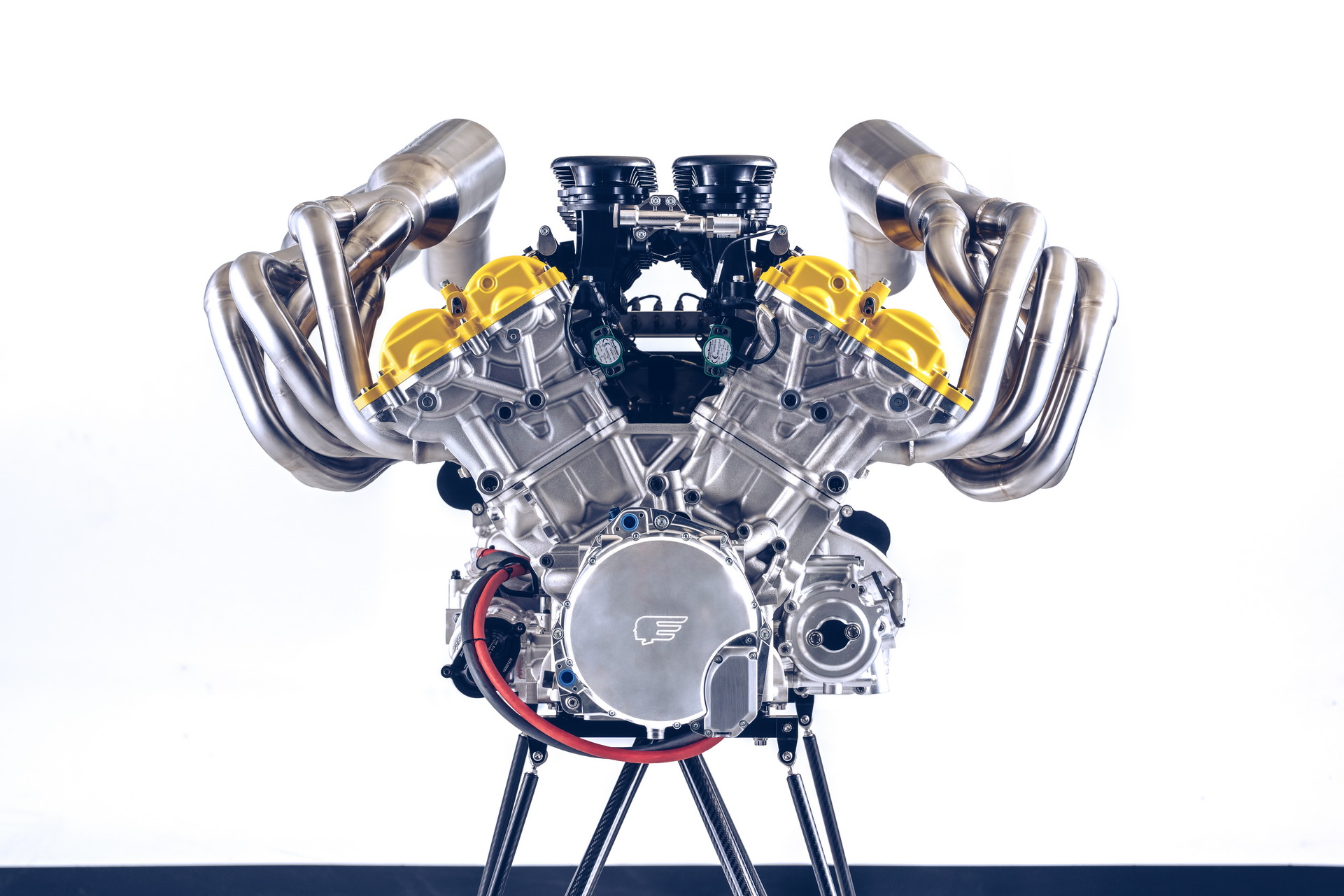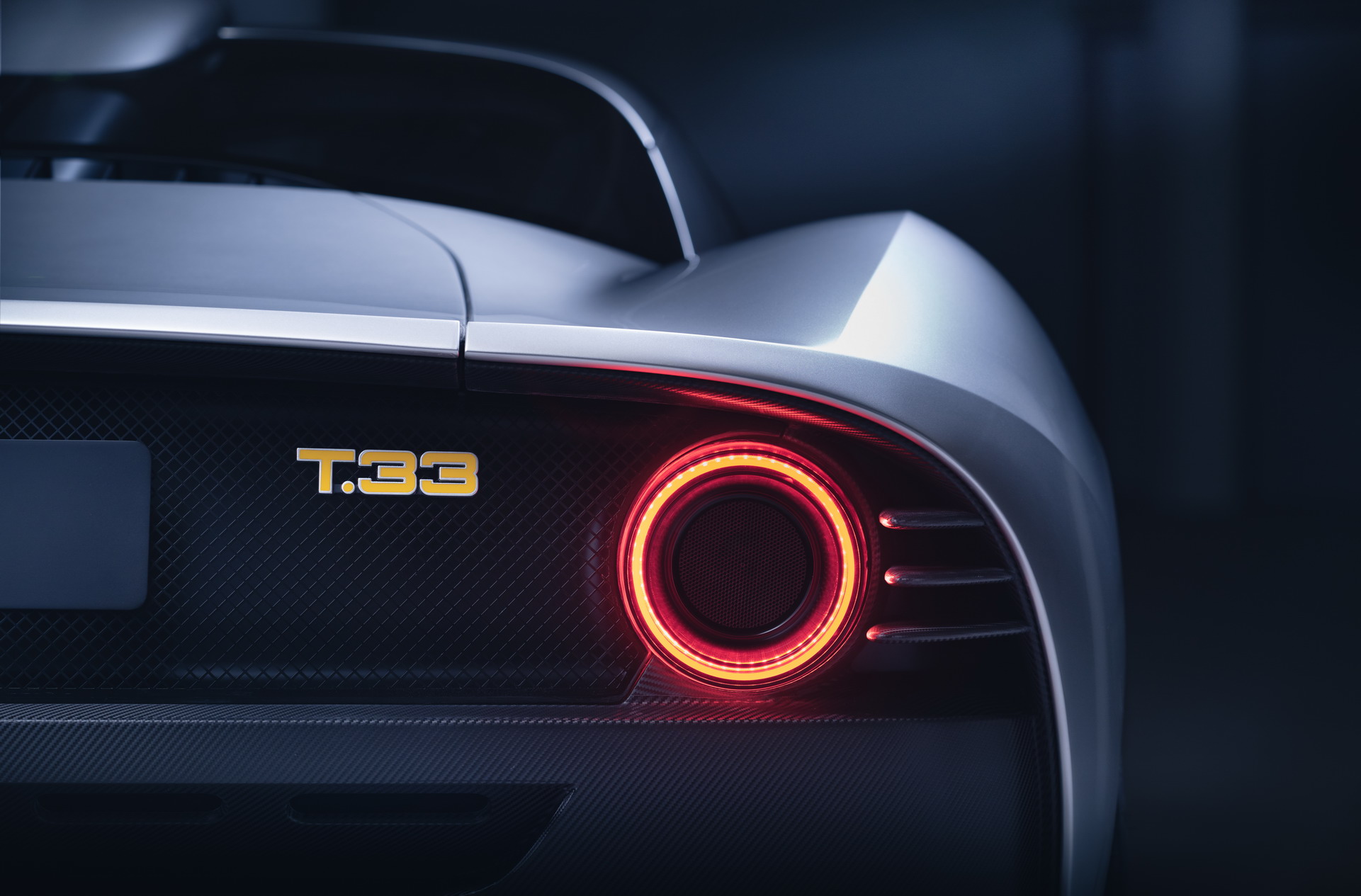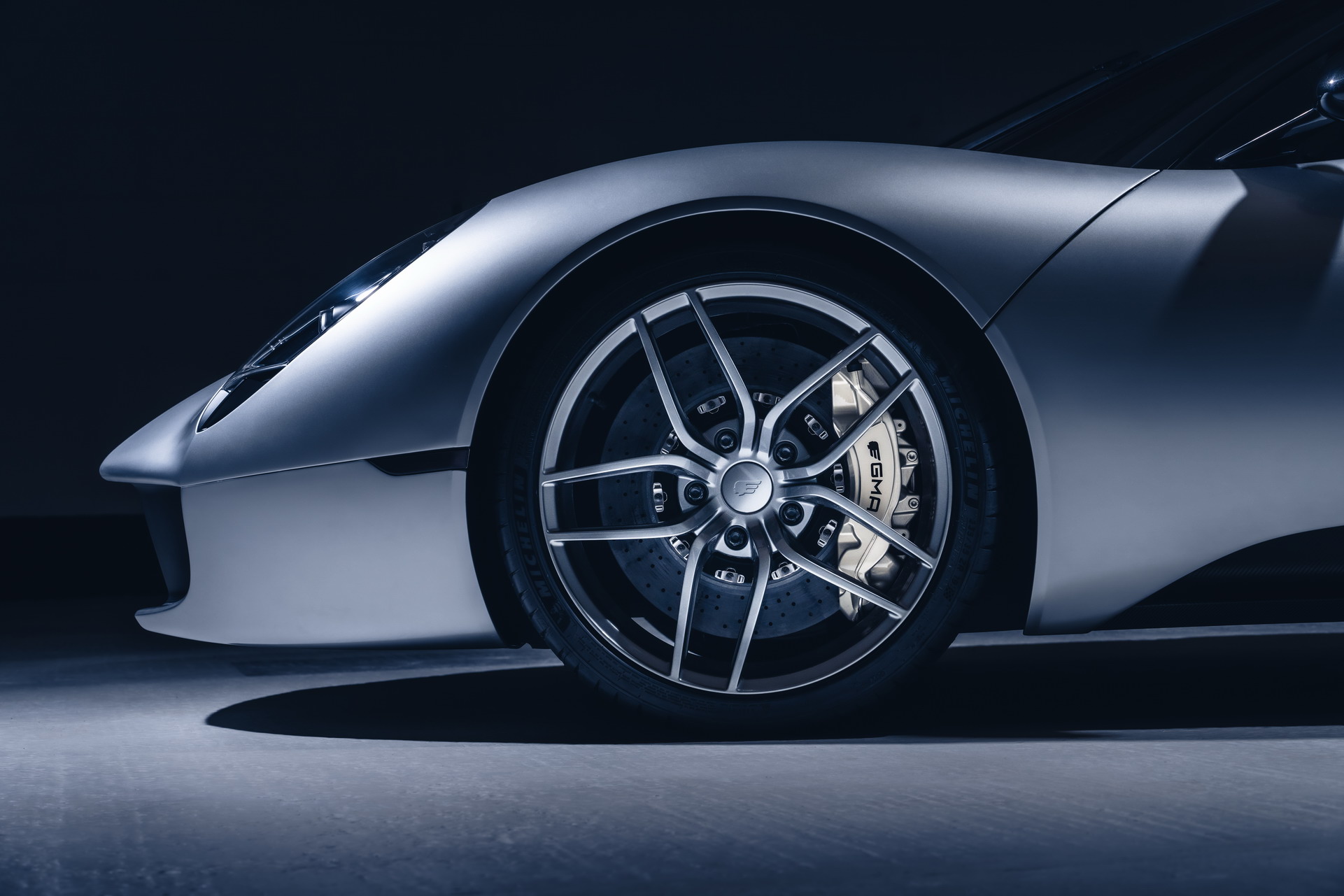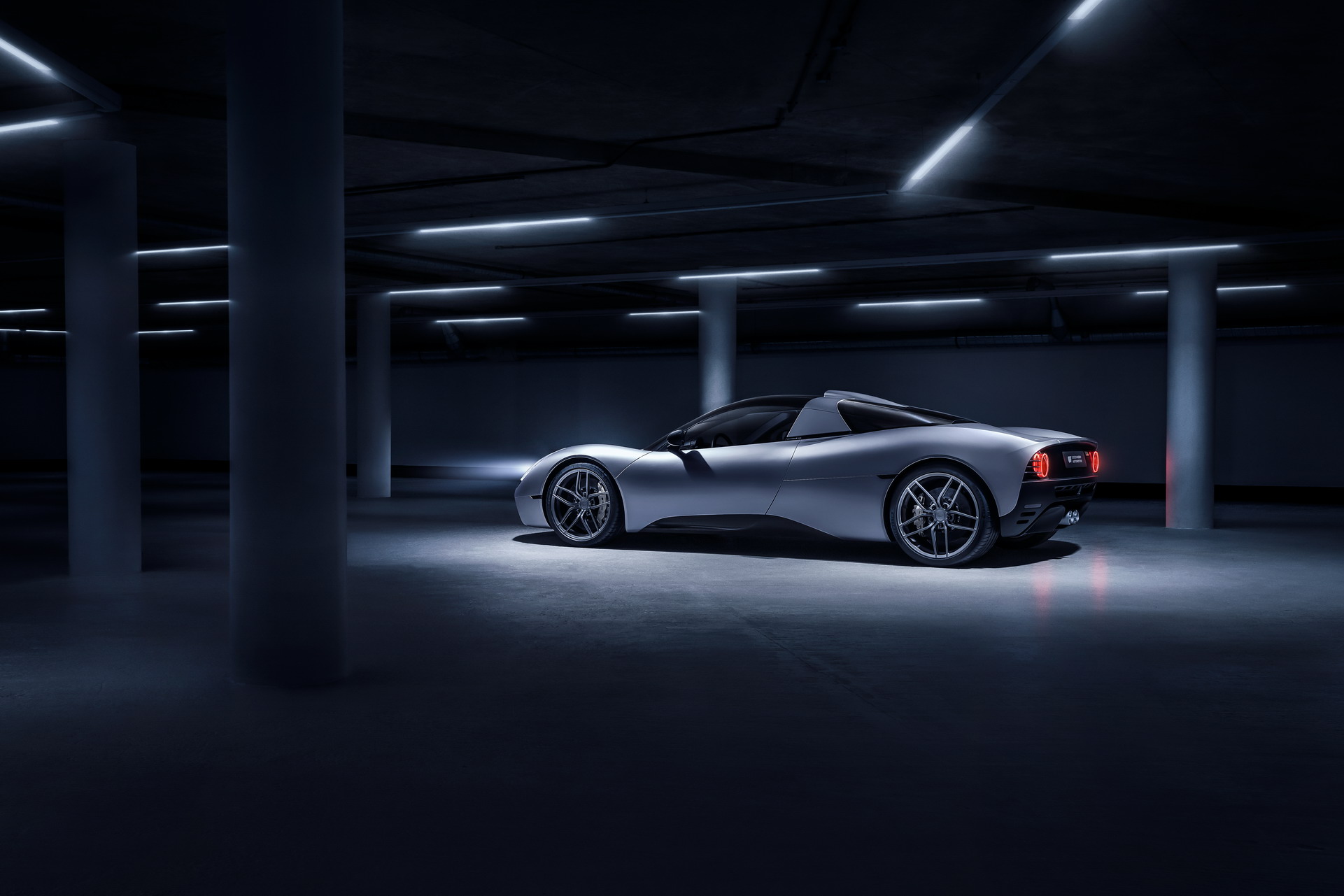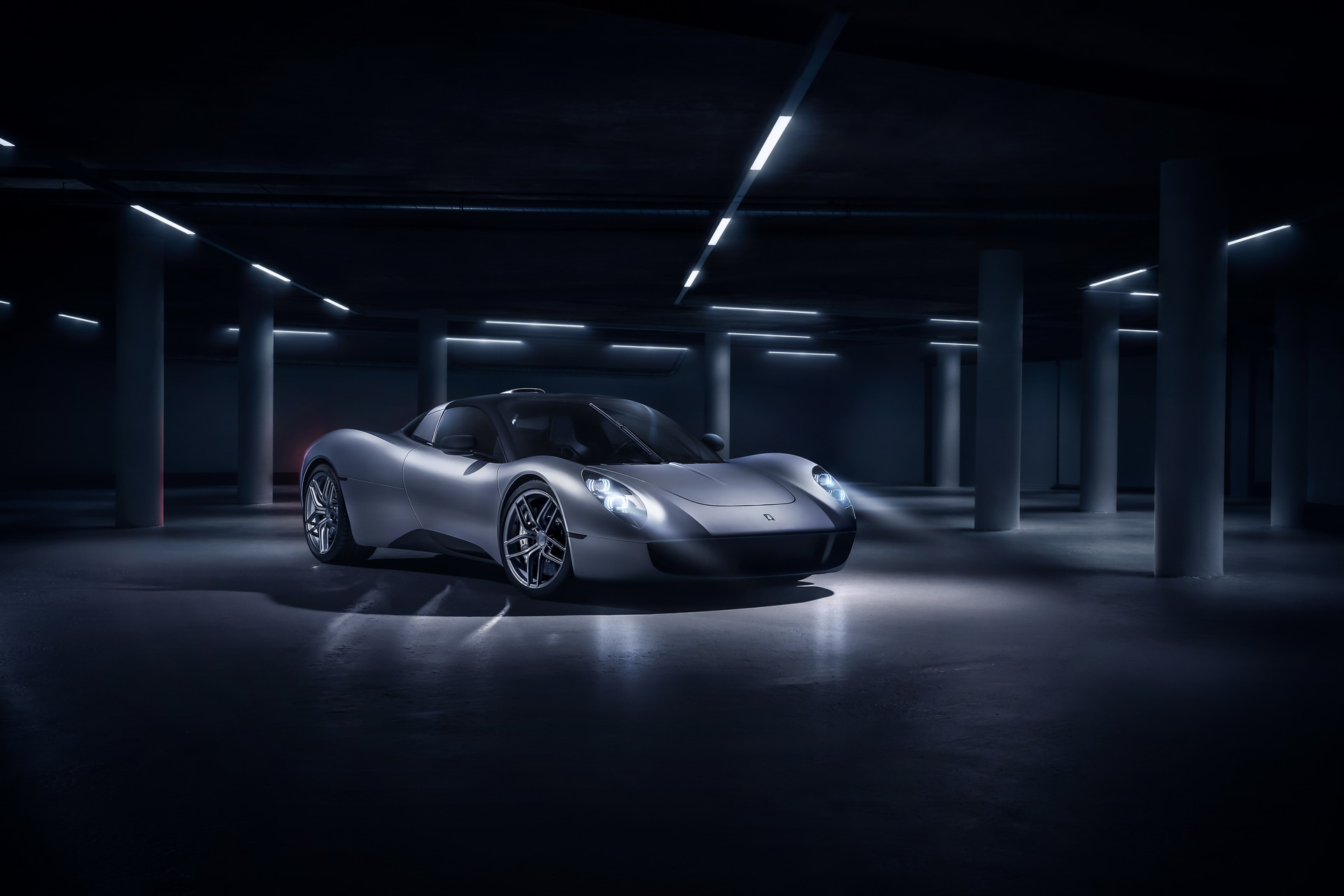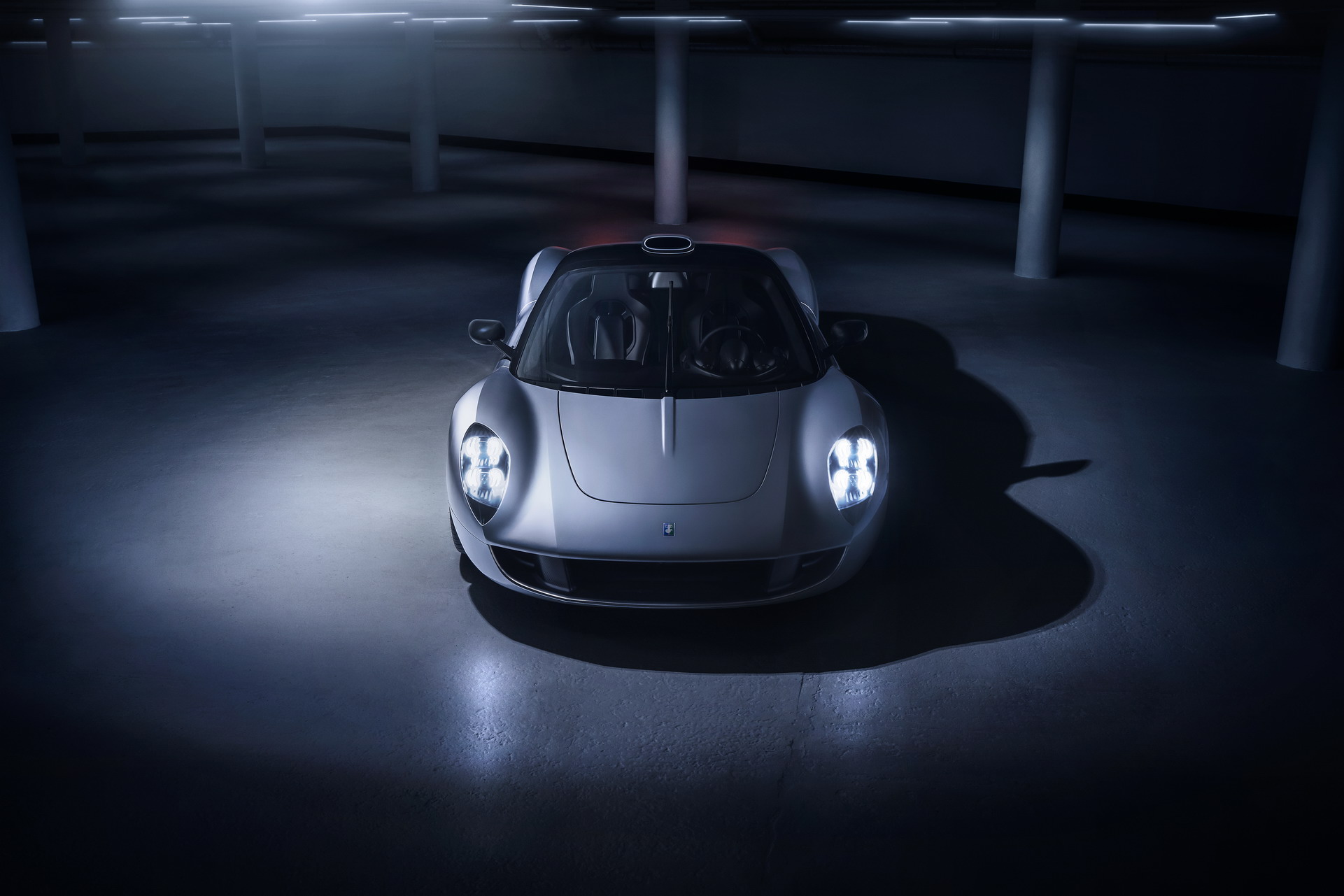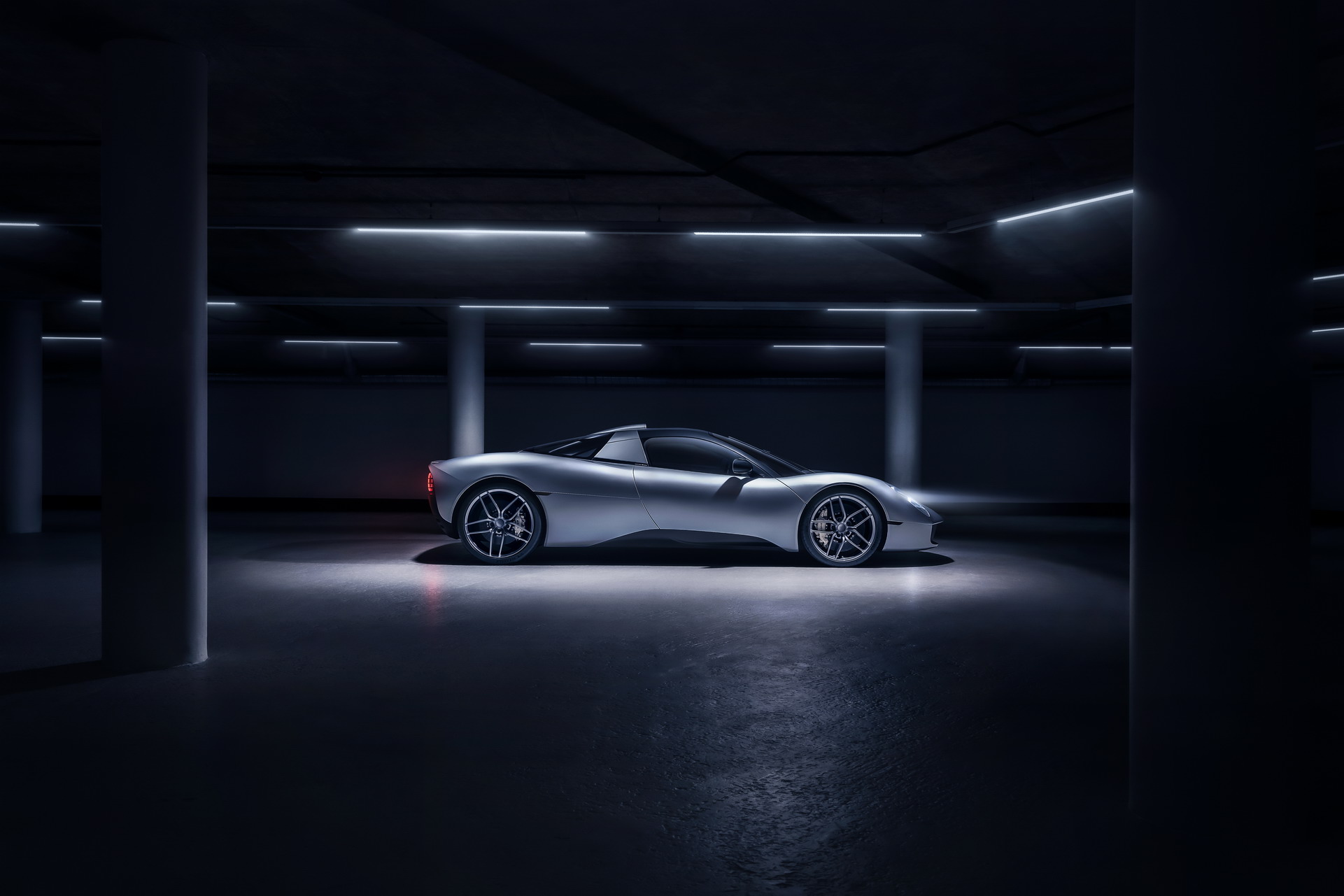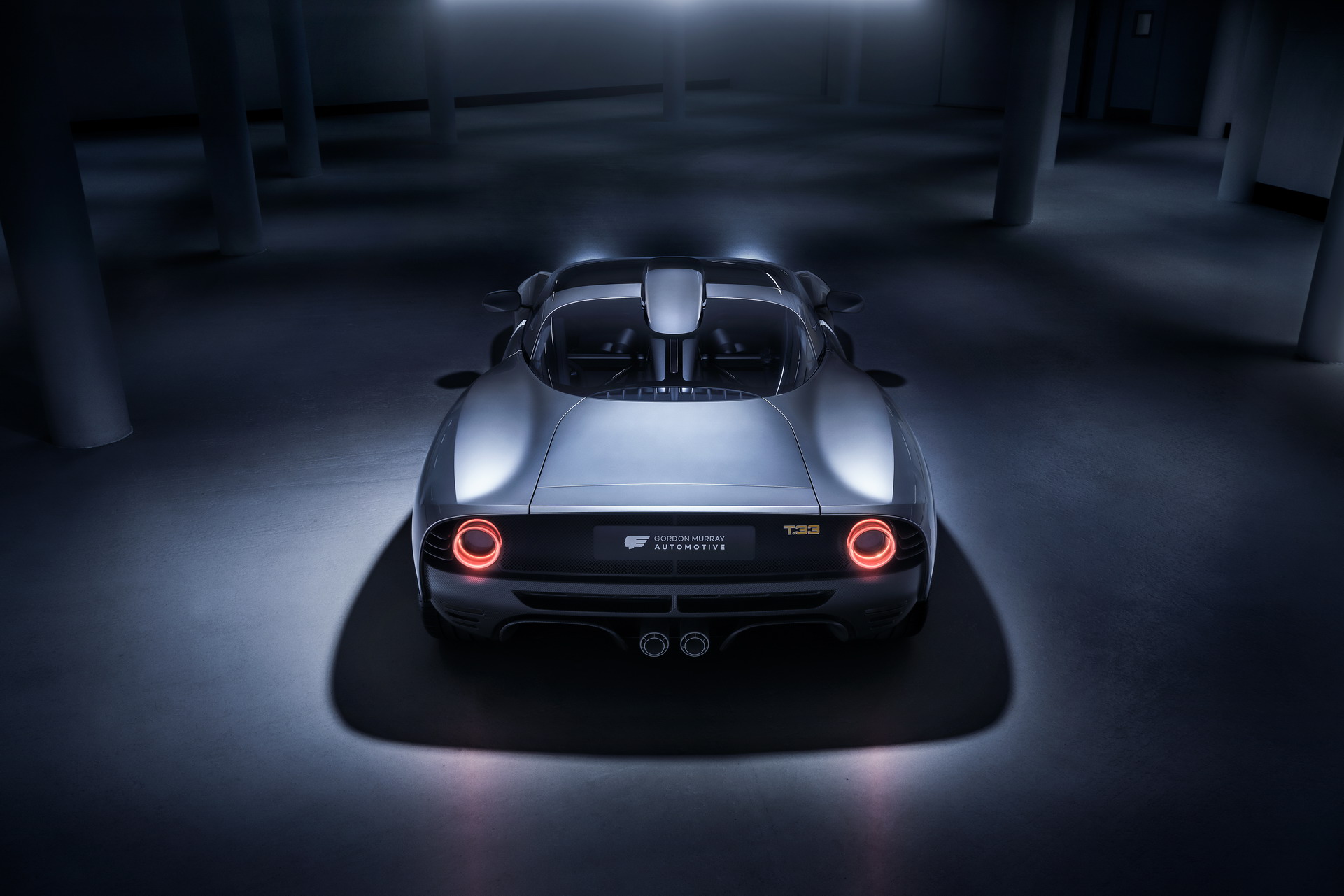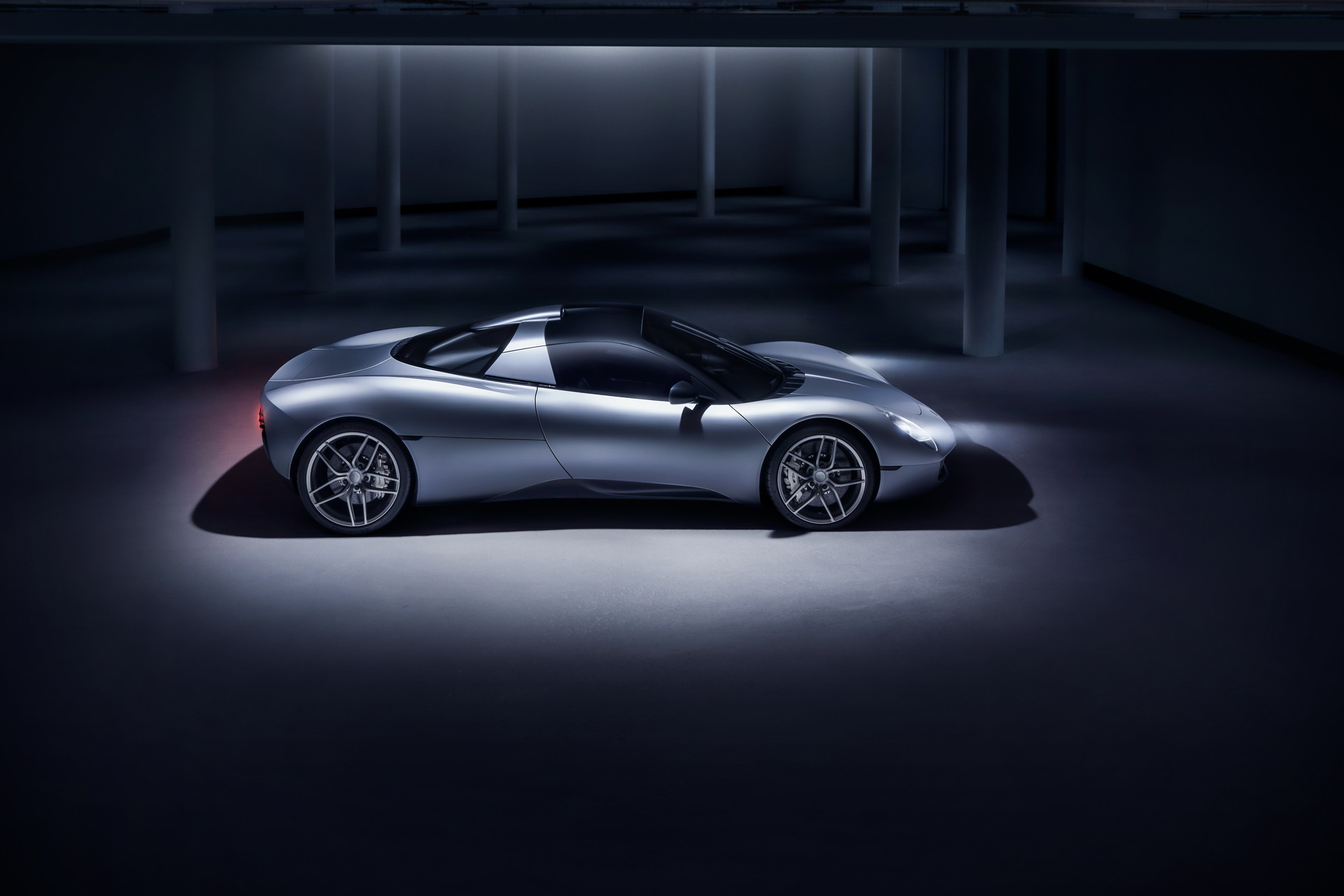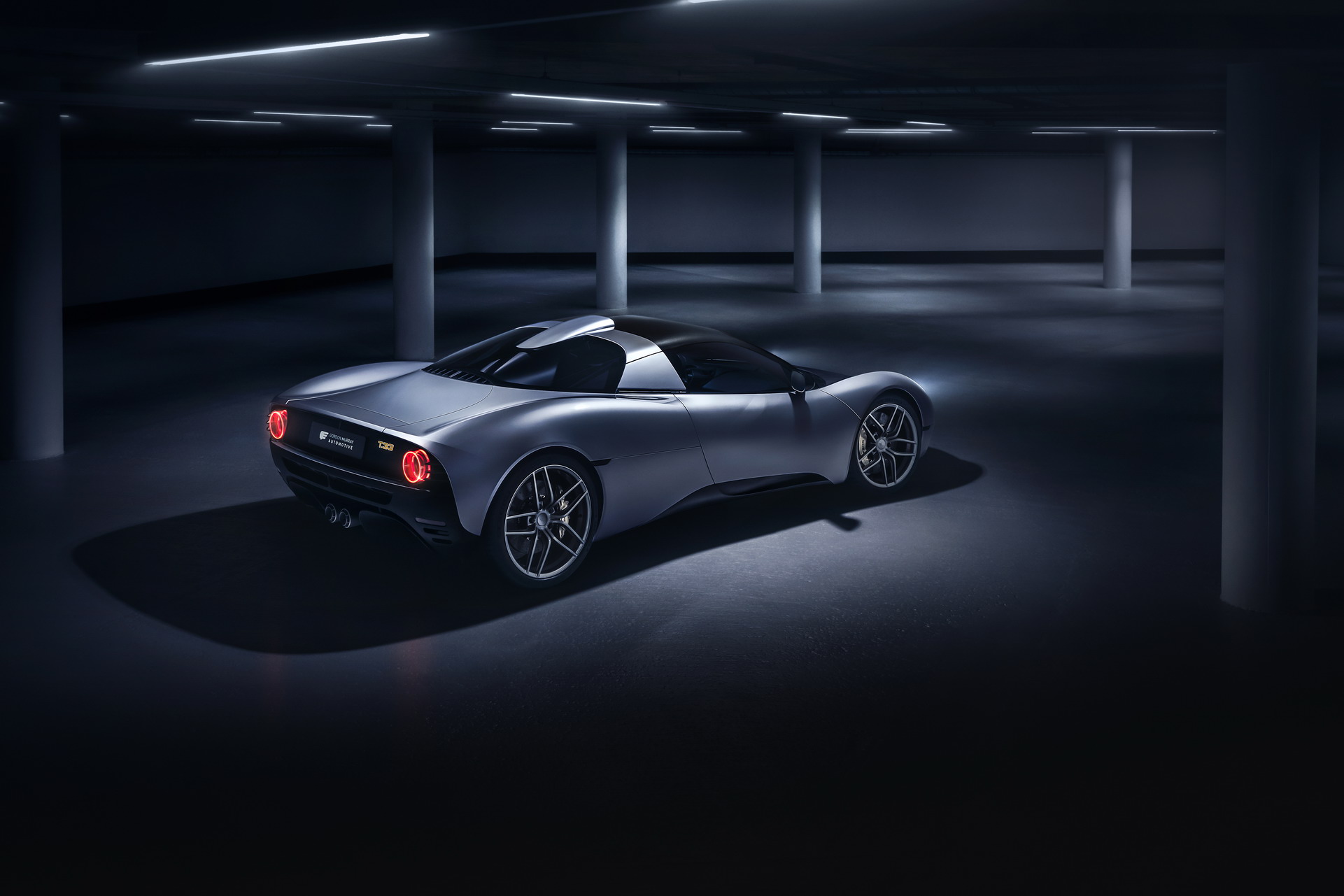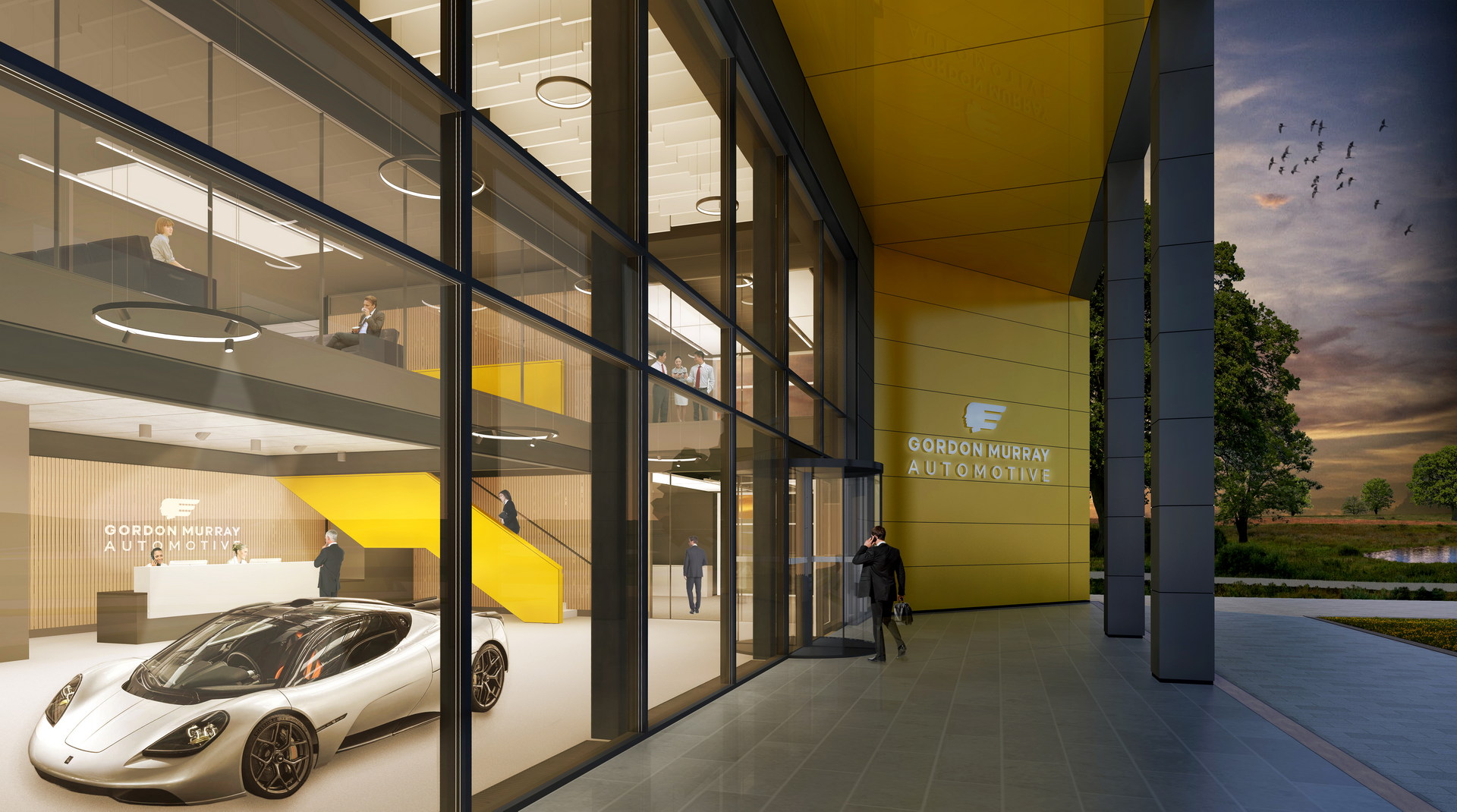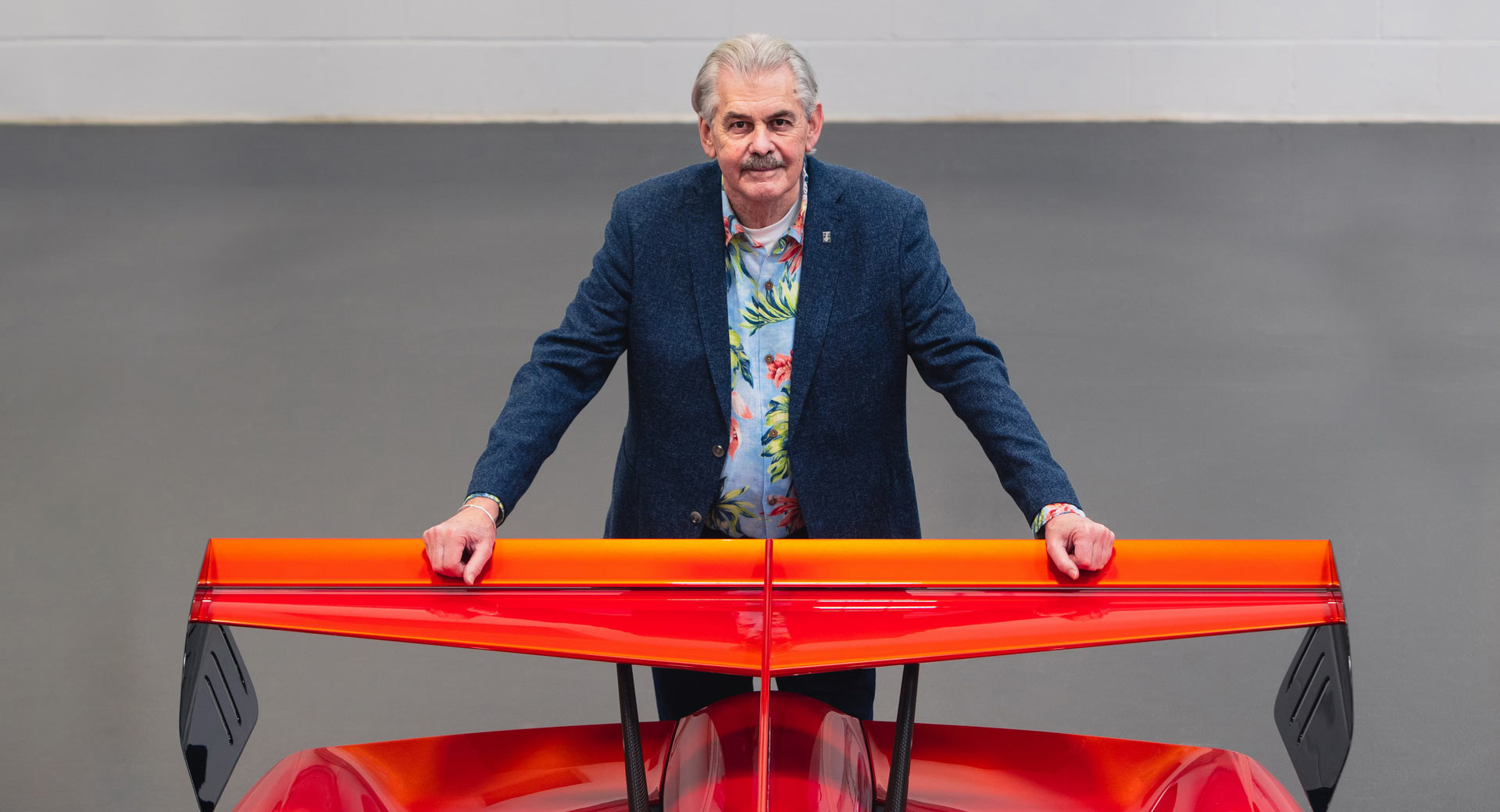Gordon Murray, the visionary behind the original McLaren F1 has revealed his second clean-sheet supercar in just two years.
Called the T.33, and described by Gordon Murray Automotive as “the world’s finest supercar GT”, the new mid-engined two-seater is pitched as a more road-focused machine than its T.50 big brother. Production is limited to 100 cars with the first of those being delivered in early 2024 and costing buyers £1.37 m ($1.85 m) plus taxes.
3.9-liter V12 with 606 horsepower
That T.33’s GT remit doesn’t mean that performance or driver interaction completely takes a back seat. The T.33 shares its platform with the T.50 and both cars employ a naturally aspirated Cosworth-developed 3.9-liter V12. But the T.33 gets new camshafts and a new intake and exhaust system to suit its position in the GMA lineup. So while the T.50 develops 654 hp (663 PS) and 344 lb-ft (467 Nm) and revs to 11,500 rpm, the T.33 makes a more modest 606 hp (615 PS) and 611 lb-ft (451 Nm), and spins to “only” 11,100rpm.
But with a curb weight of around 2420 lbs (1100 kg), which GMA points out is roughly 660 lbs (300 kg) below the weight of most other supposedly lightweight supercars, and a roof snorkel slurping down air directly above your head, you’re unlikely to be left disappointed when you put your foot down. Exactly how quick the T.33 is remains to be seen as GMA hasn’t yet released any performance figures.
Related: Gordon Murray T.50’s Naturally Aspirated V12 Sounds Astonishing Revving To 12,100 RPM
We do know, however that the car will be available with a choice of manual or a paddle-shift transmissions, both developed by Xtrac and featuring six gears. From there, power travels to the rear wheels through a limited slip differential. Like a race car, but unlike almost every road car, the T.33’s powertrain is semi structural to help promote rigidity and response. The rear suspension is mounted directly to the transmission casing.
Designed to meet U.S. safety requirements
The chassis itself is a carbon fibre monocoque fitted with carbon panels that promises benefits both in terms of handling and safety. The T.33 has been engineered to meet U.S. safety standards and will be sold in North America as well as Europe. Suspension is by double wishbones at each corner, backed up by Brembo carbon ceramic brakes hiding behind 19-inch front, and 20-inch rear wheels. Those front wheels, incidentally, are directed along the road by an old-school hydraulically assisted power steering rack chosen for its superior feel versus a more efficient electric alternative.
Naturally, aerodynamic science plays a key role in the T.33’s unfashionably clean design. It dispenses with the T.50’s ugly rear fan, relying instead on an active rear spoiler and ground-effects technology to sucker the car to the ground. GMA explains that a ground effect inlet at the nose channels air along the floor, leading to a boundary layer removal duct that’s activated by base suction behind the car. No, I’m not fully sure what that means either, but GMA says it results in a 30 percent improvement in aerodynamic efficiency versus a conventional ground effect supercar, which sounds good to us.
Take a look inside the T.33 and you’ll see that it’s as free from fussy details and distractions as is the exterior design. There’s no touchscreen, no column stalks, there are rotary controls instead of buttons, and the 4.7-inch (120 mm) rev counter is, says GMA, “defiantly” analogue. But the cabin isn’t totally devoid of technology. You still get Apple CarPlay and Android Auto. It’s just that the focus here has clearly been on quality over visible gadgetry. Every major control is made from aluminium instead of plastic.
Practicality wasn’t neglected, either. In a nod to the mighty McLaren F1, which managed to wipe the floor with every other supercar of its age yet could carry three people and their luggage thanks to specially designed side pods, the T.33 has a front trunk, plus two side trunks located in the rear quarter panels.
The T.33 will be built at GMA’s new £50 m ($68 m) headquarters in Surrey, England. Currently under construction, the base will have space for every part of the business, from design to engineering, production and servicing, and will even feature its own test track.
What do you think of the T.33? Do you like the way it looks, and would you buy one over anything currently on offer or coming up soon from Aston Martin, Ferrari, Lamborghini or McLaren? Leave a comment and let us know.




